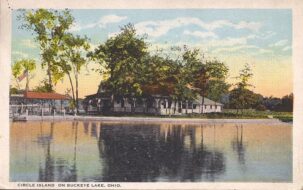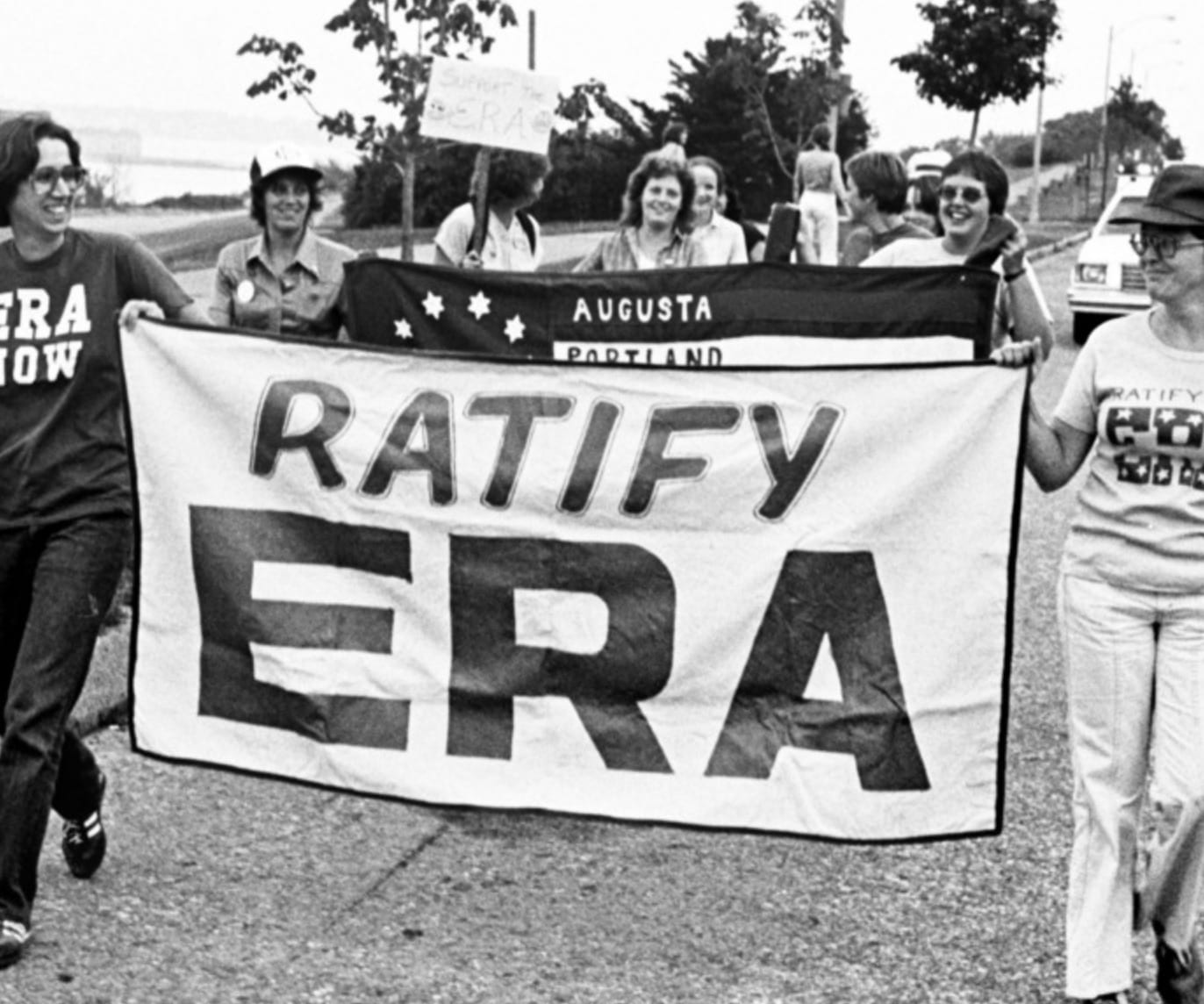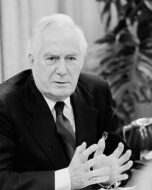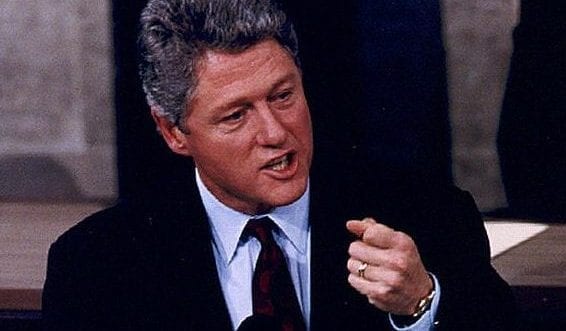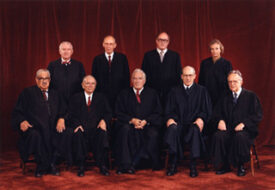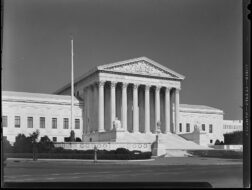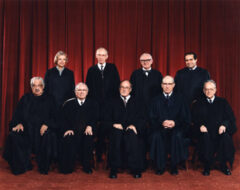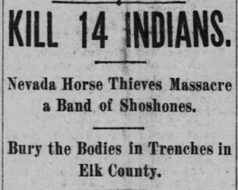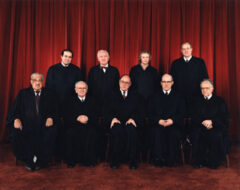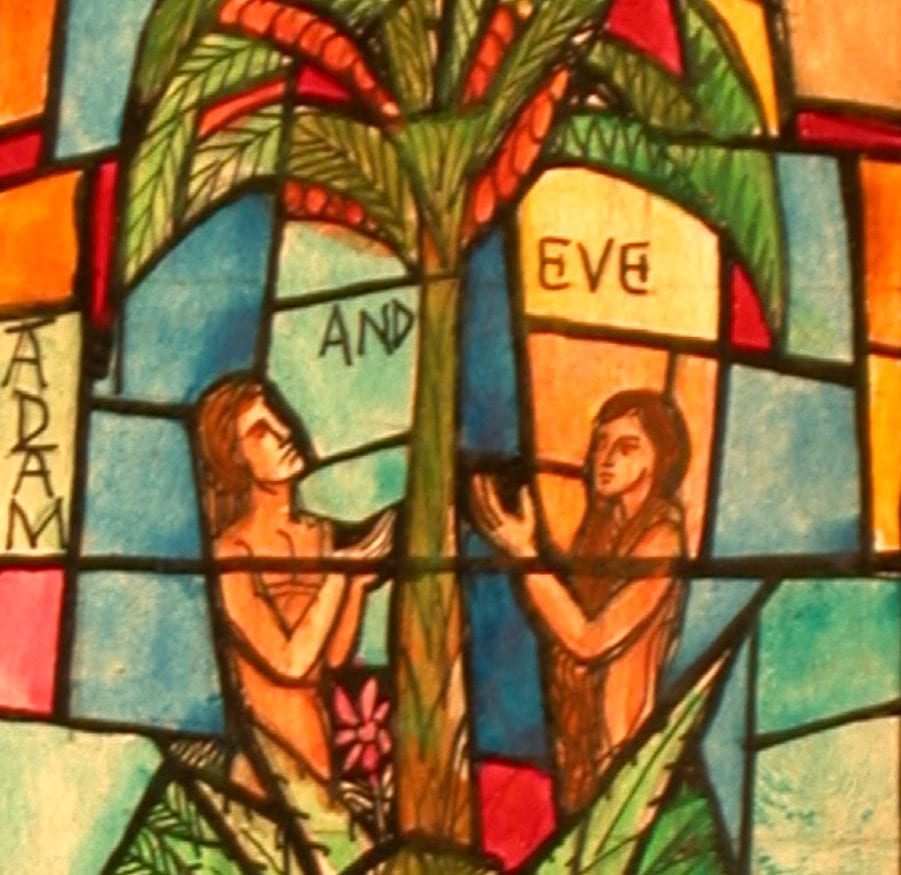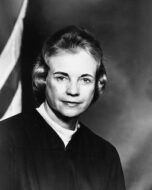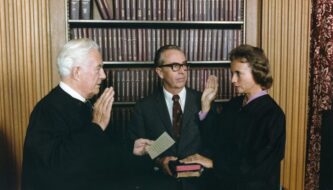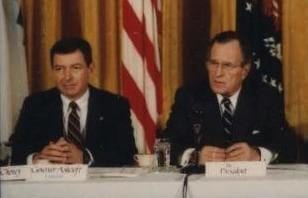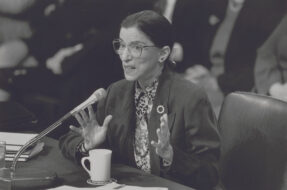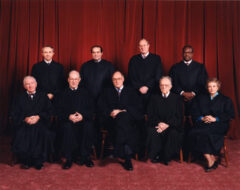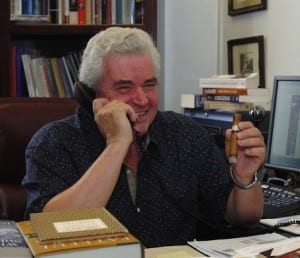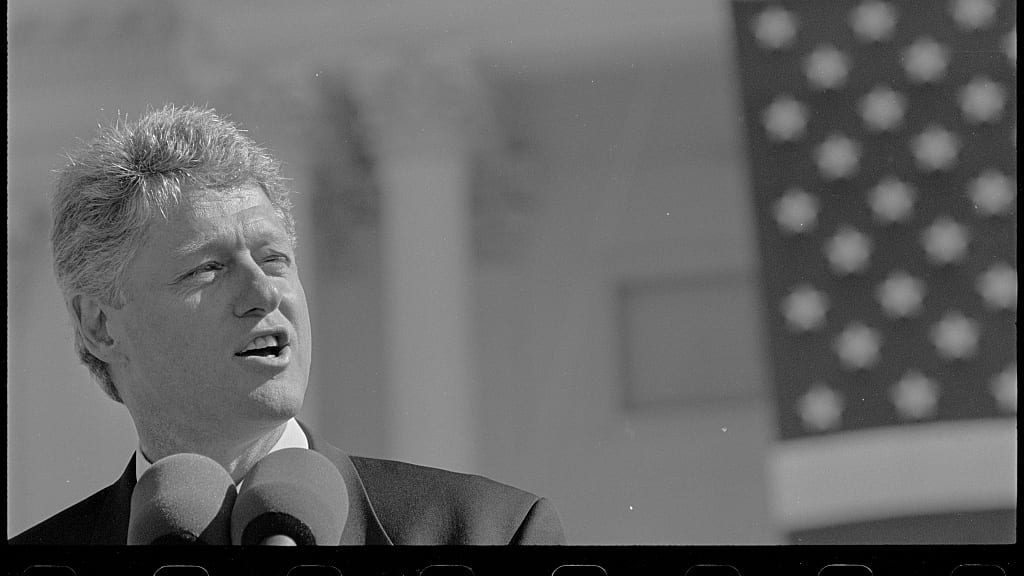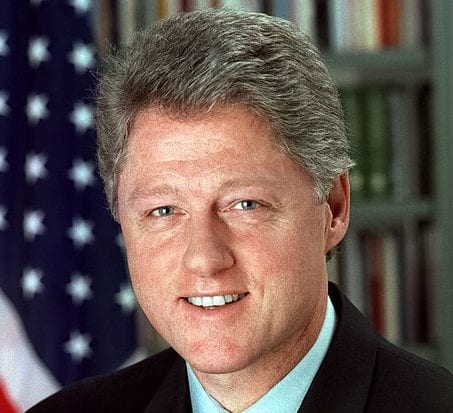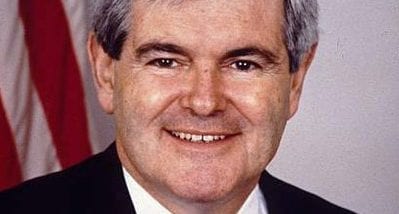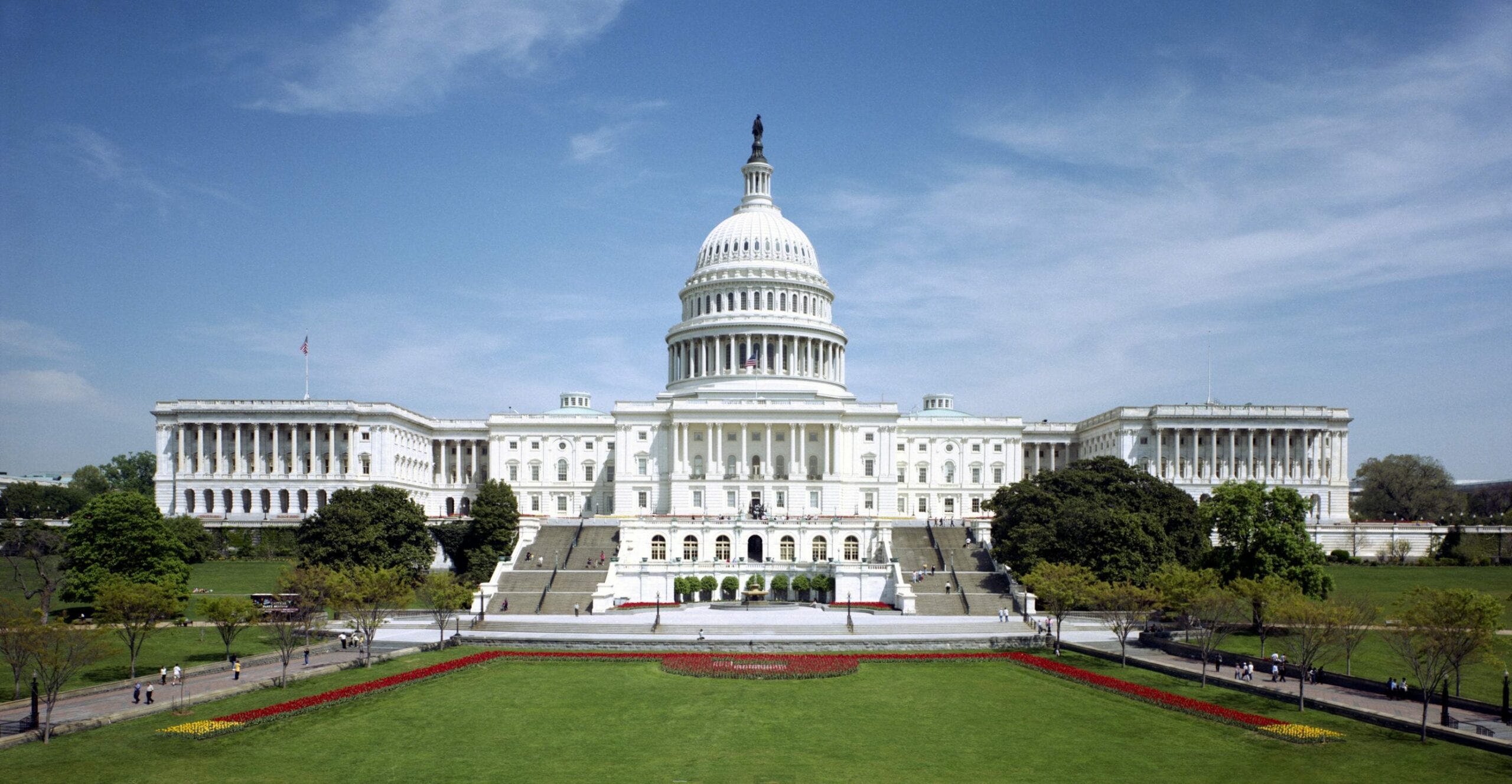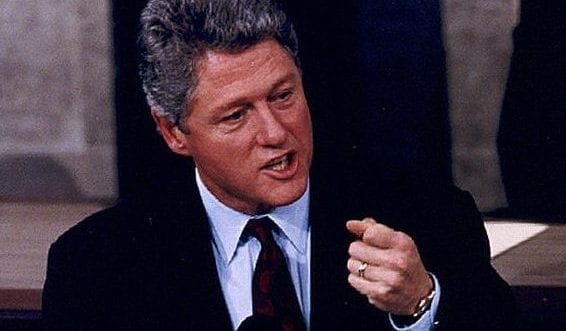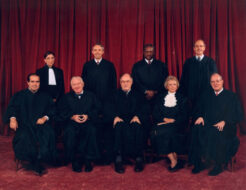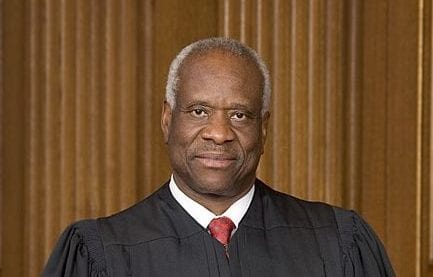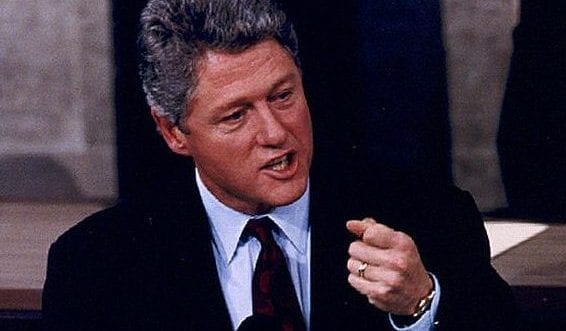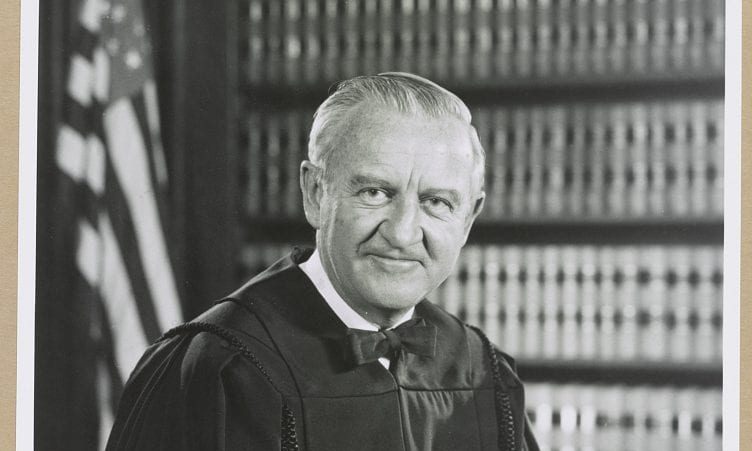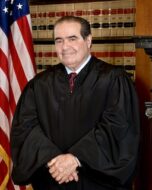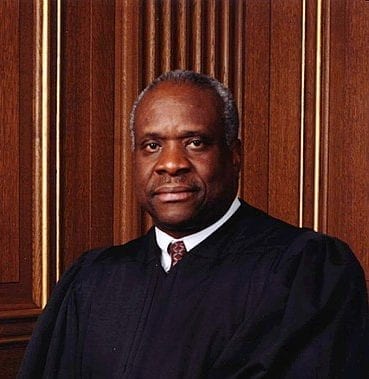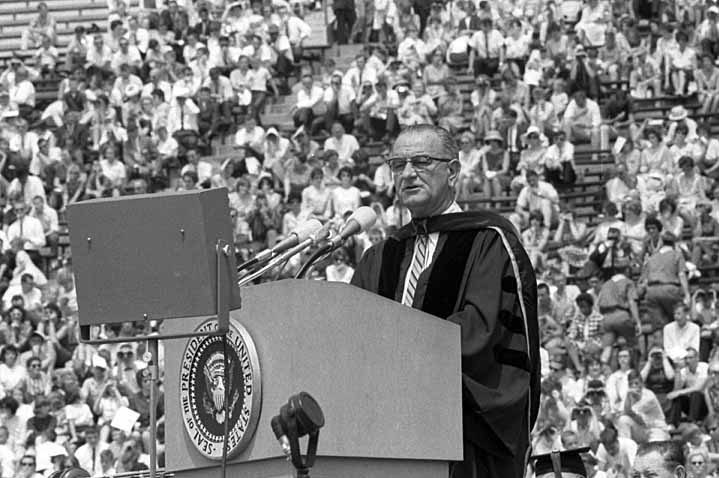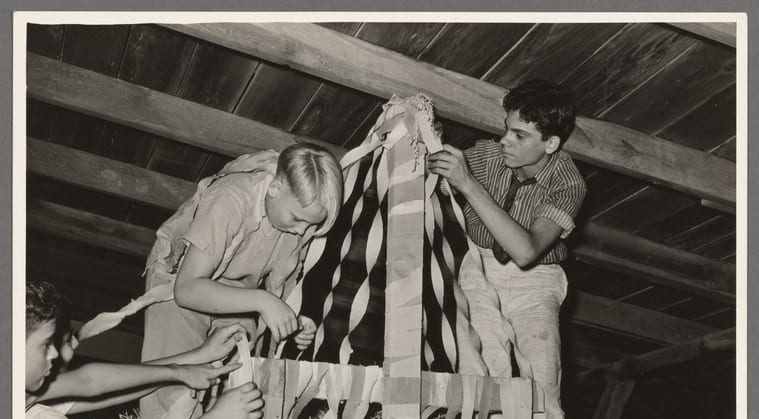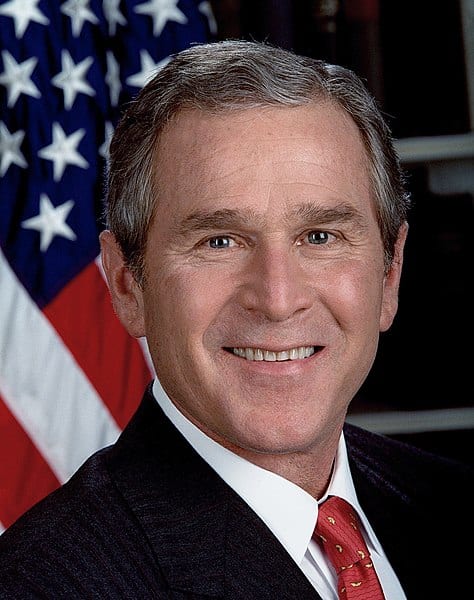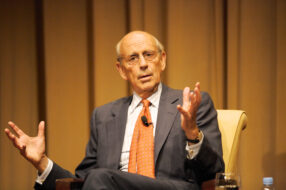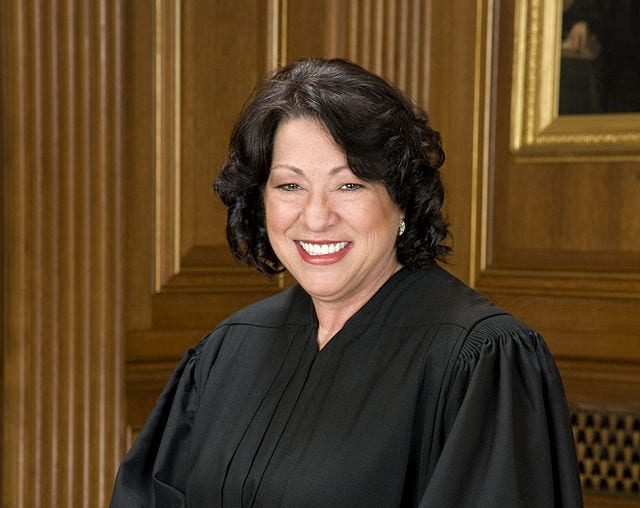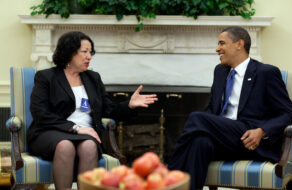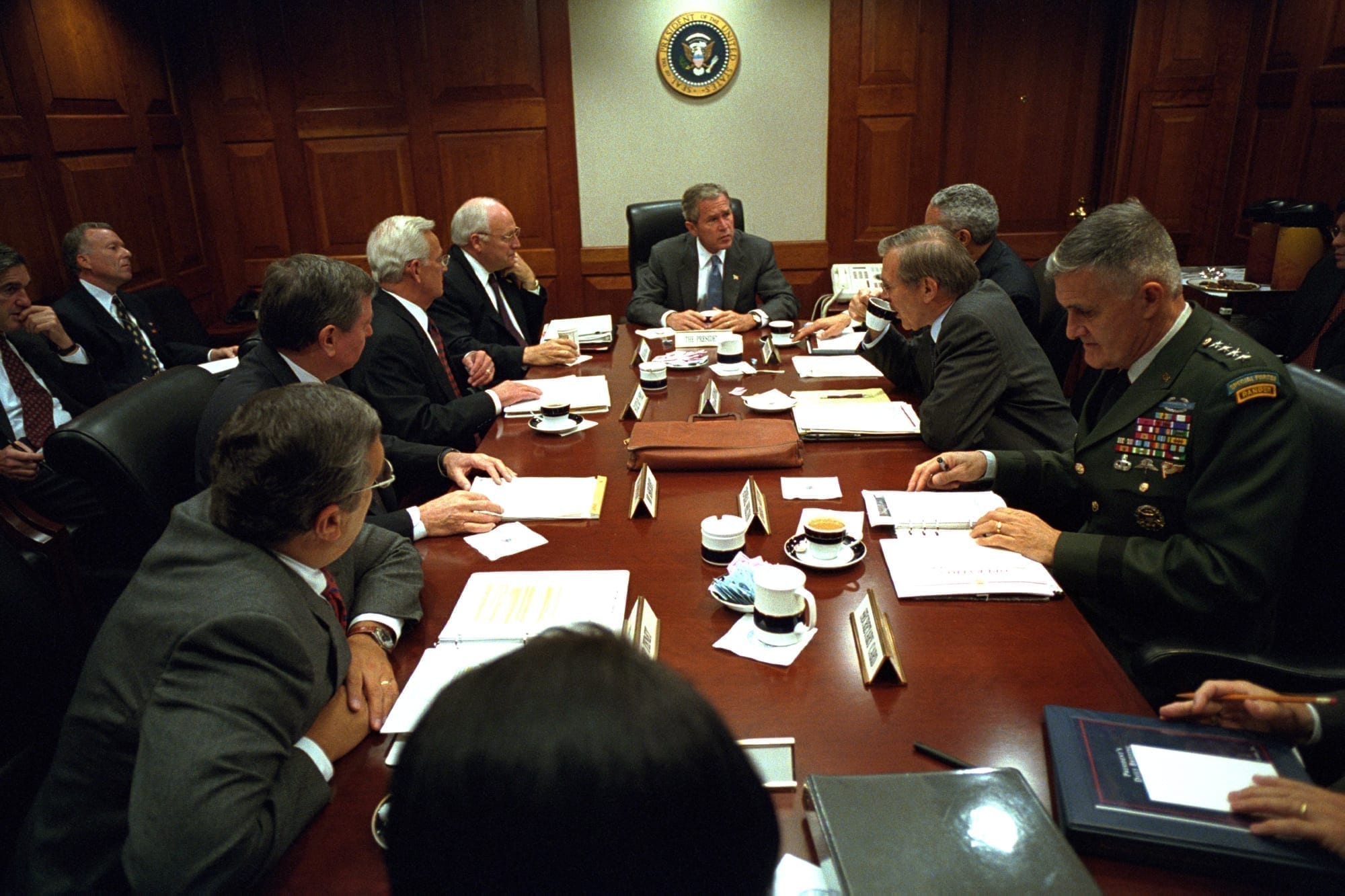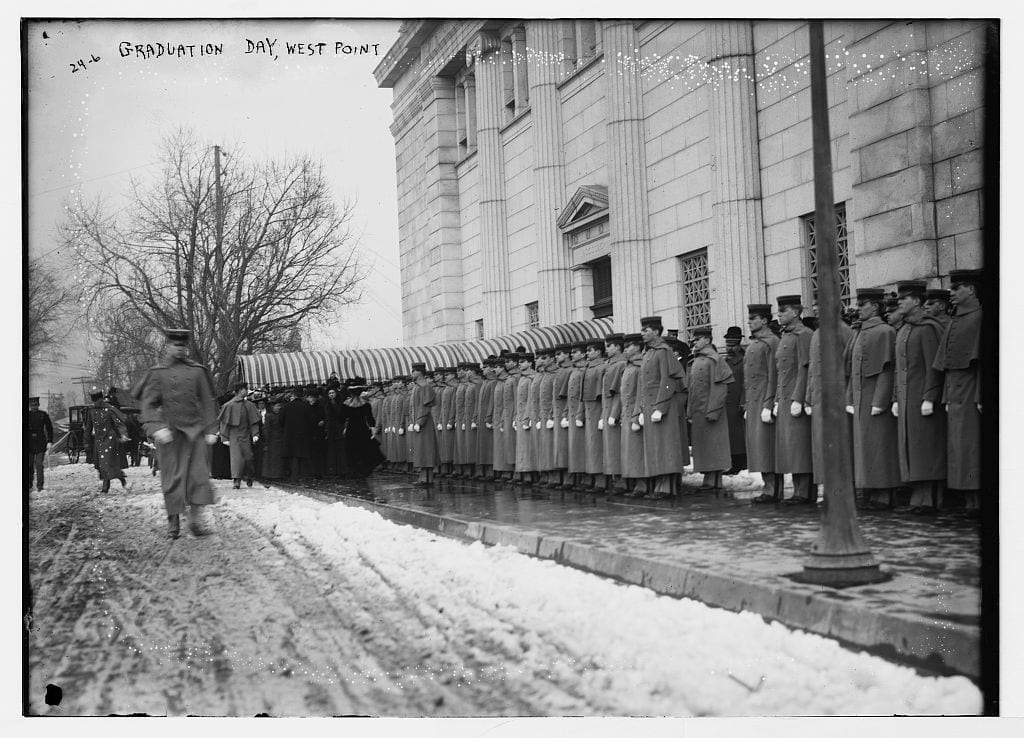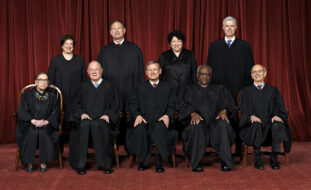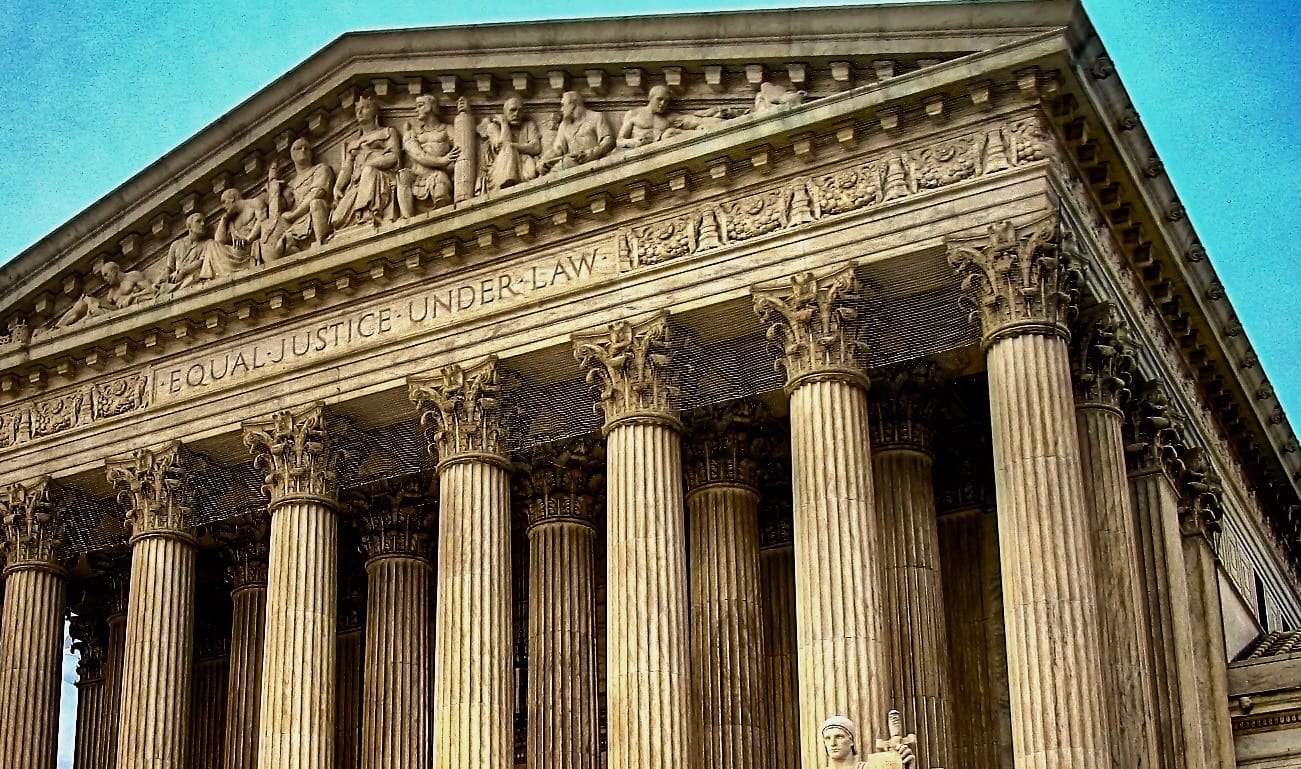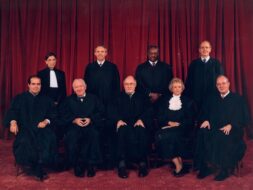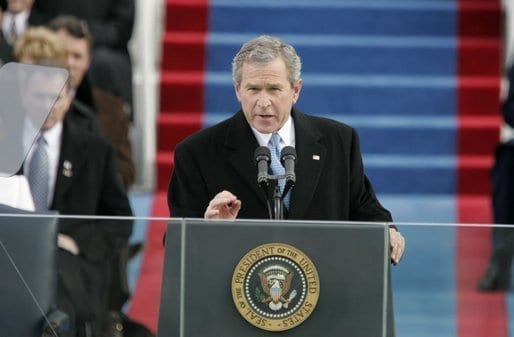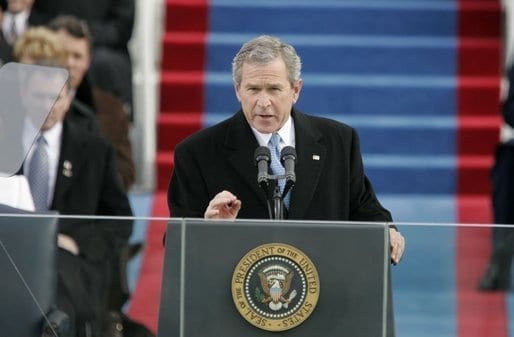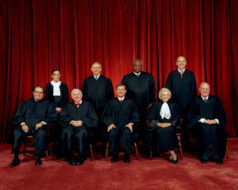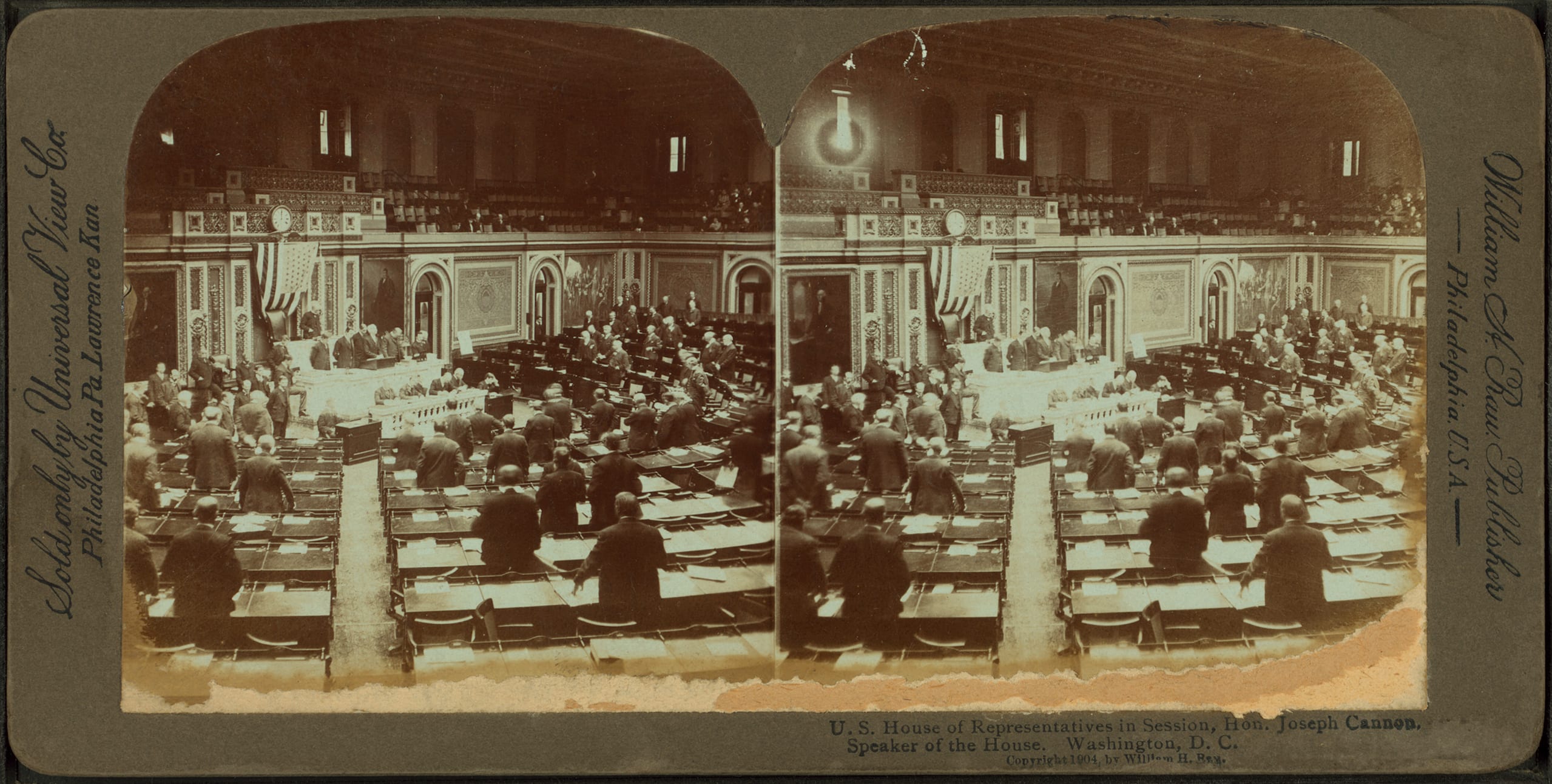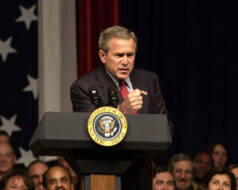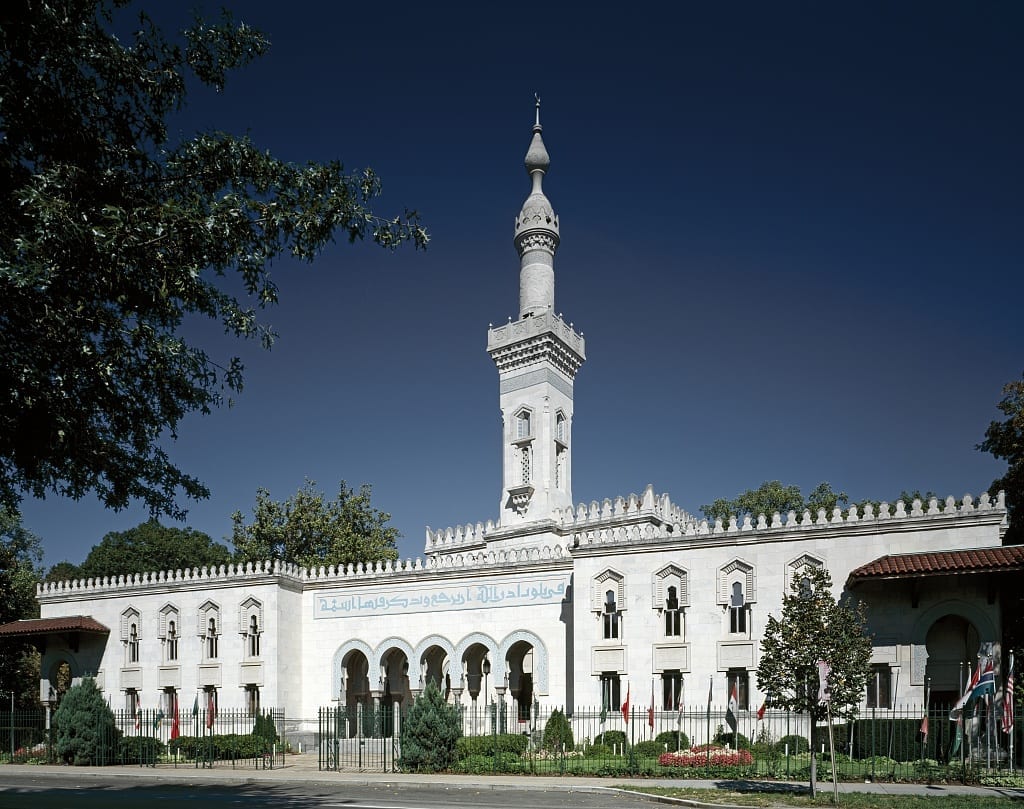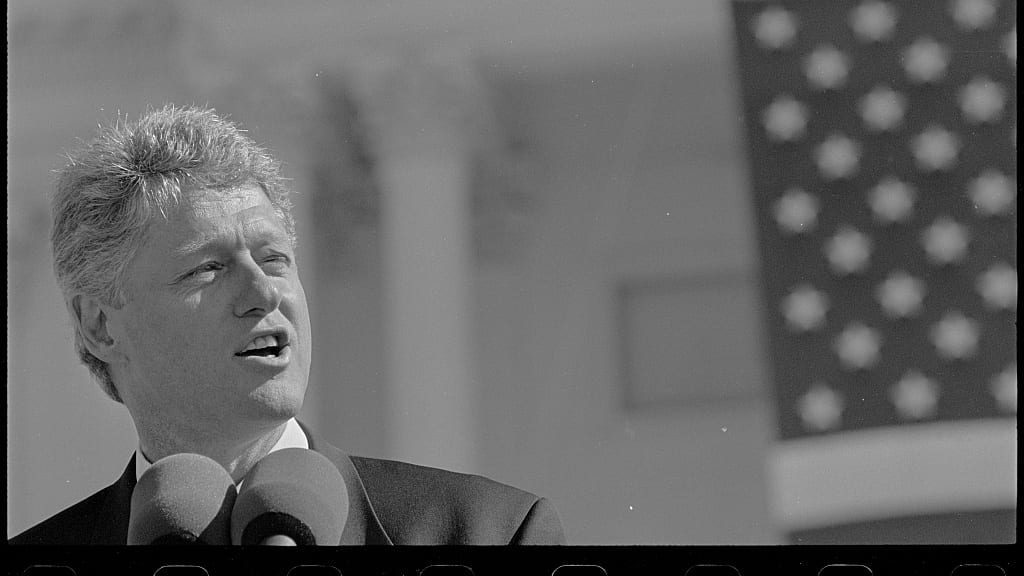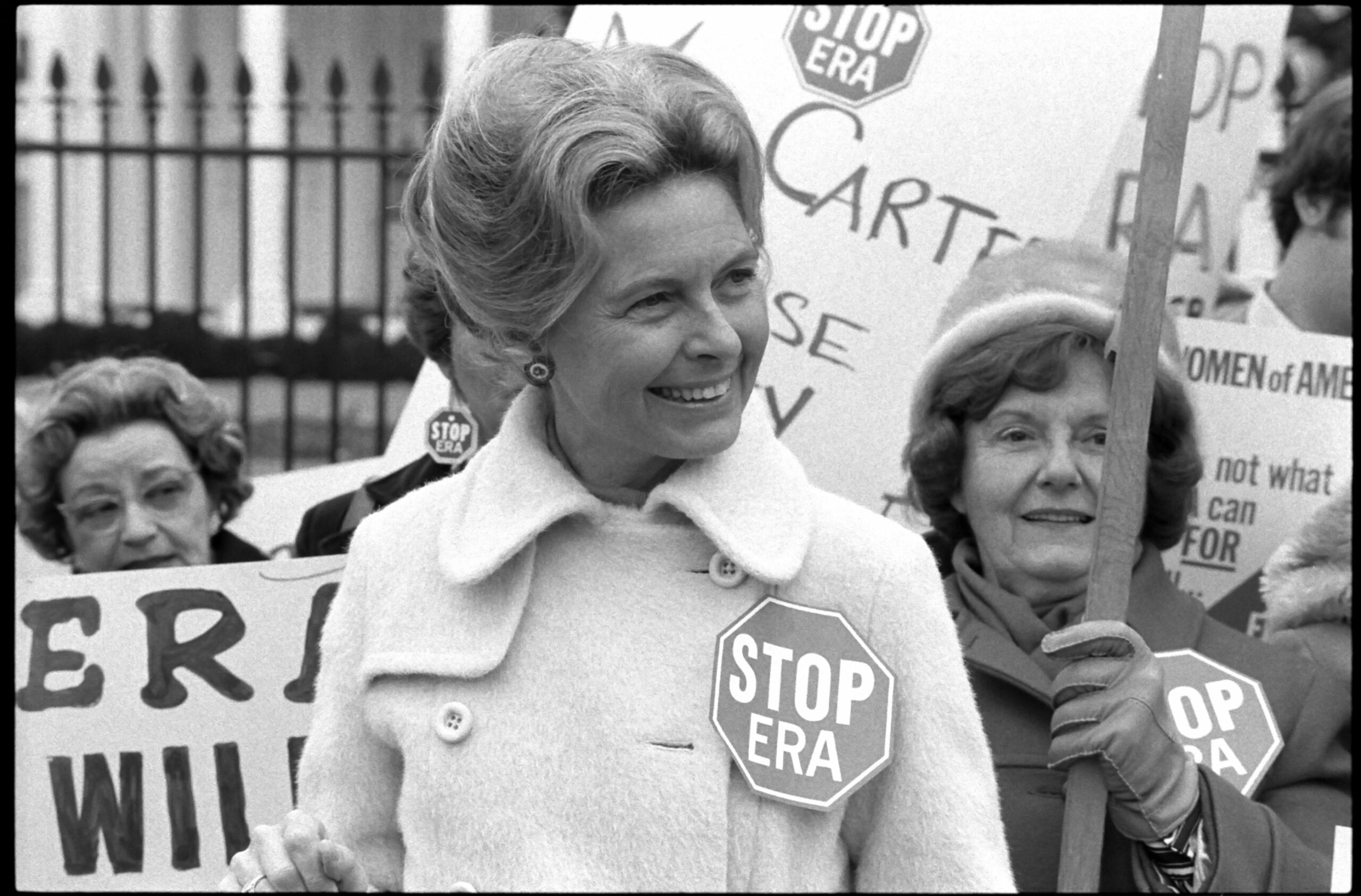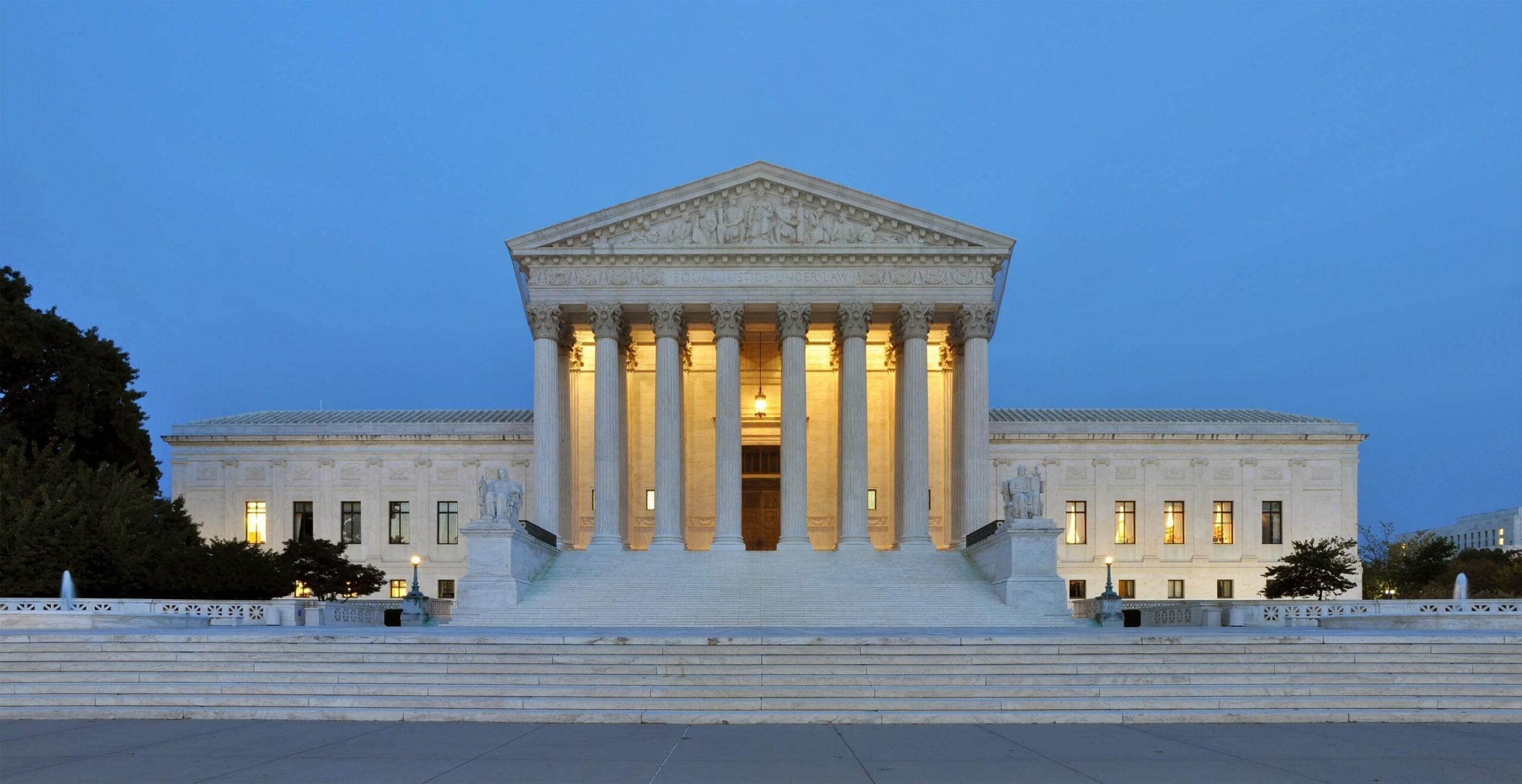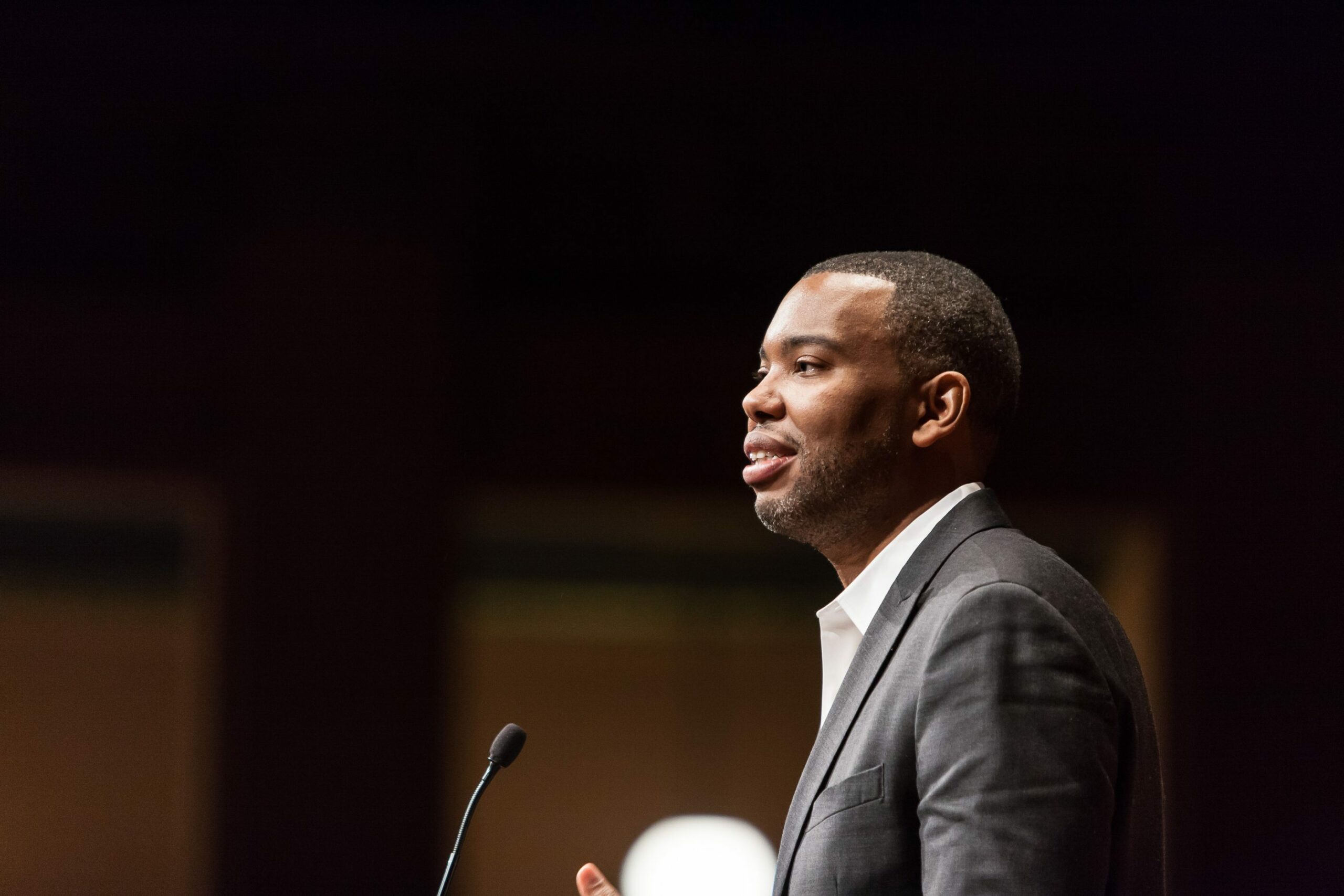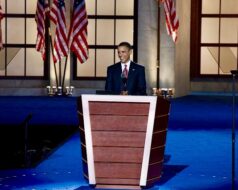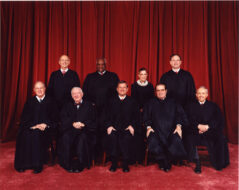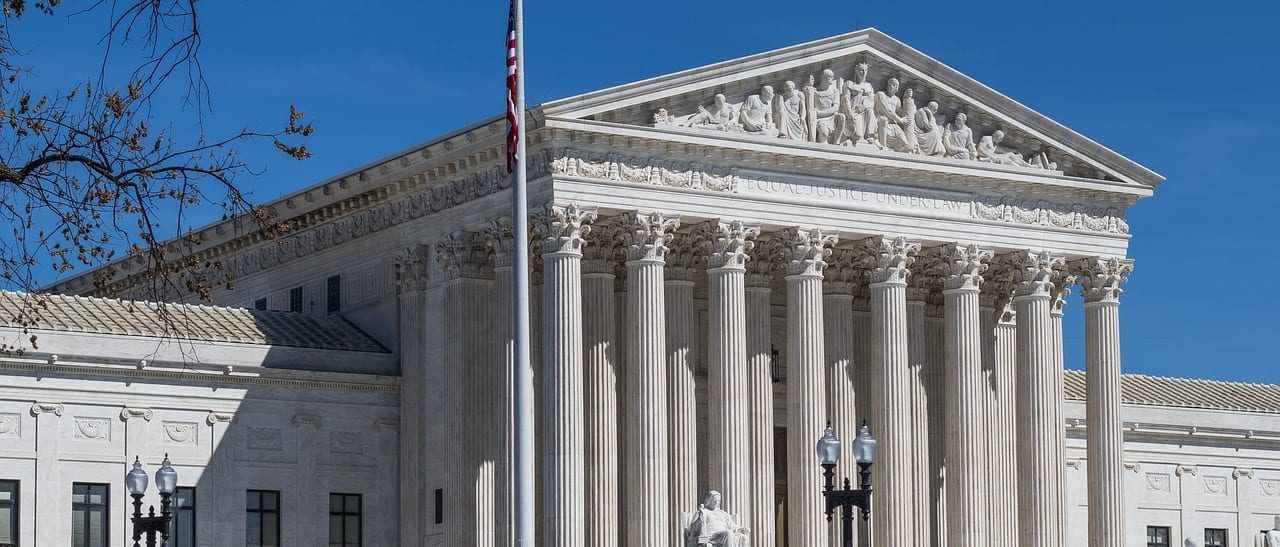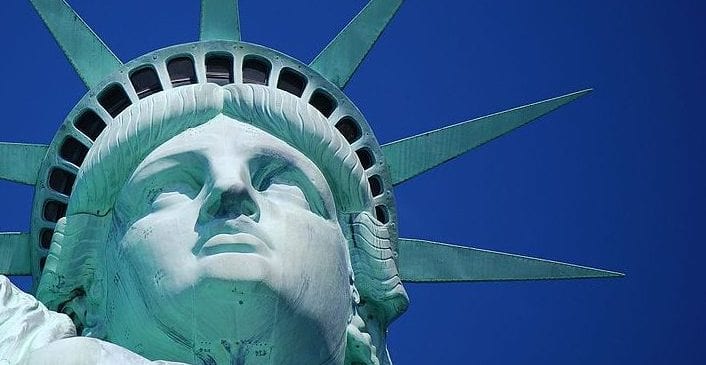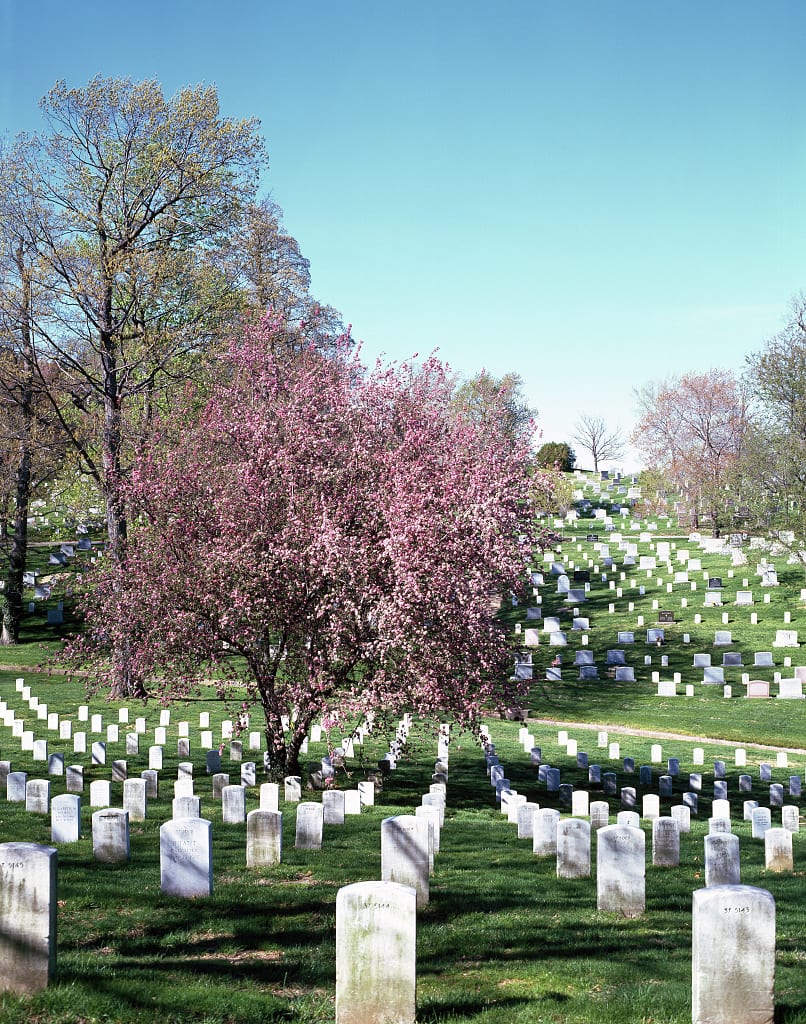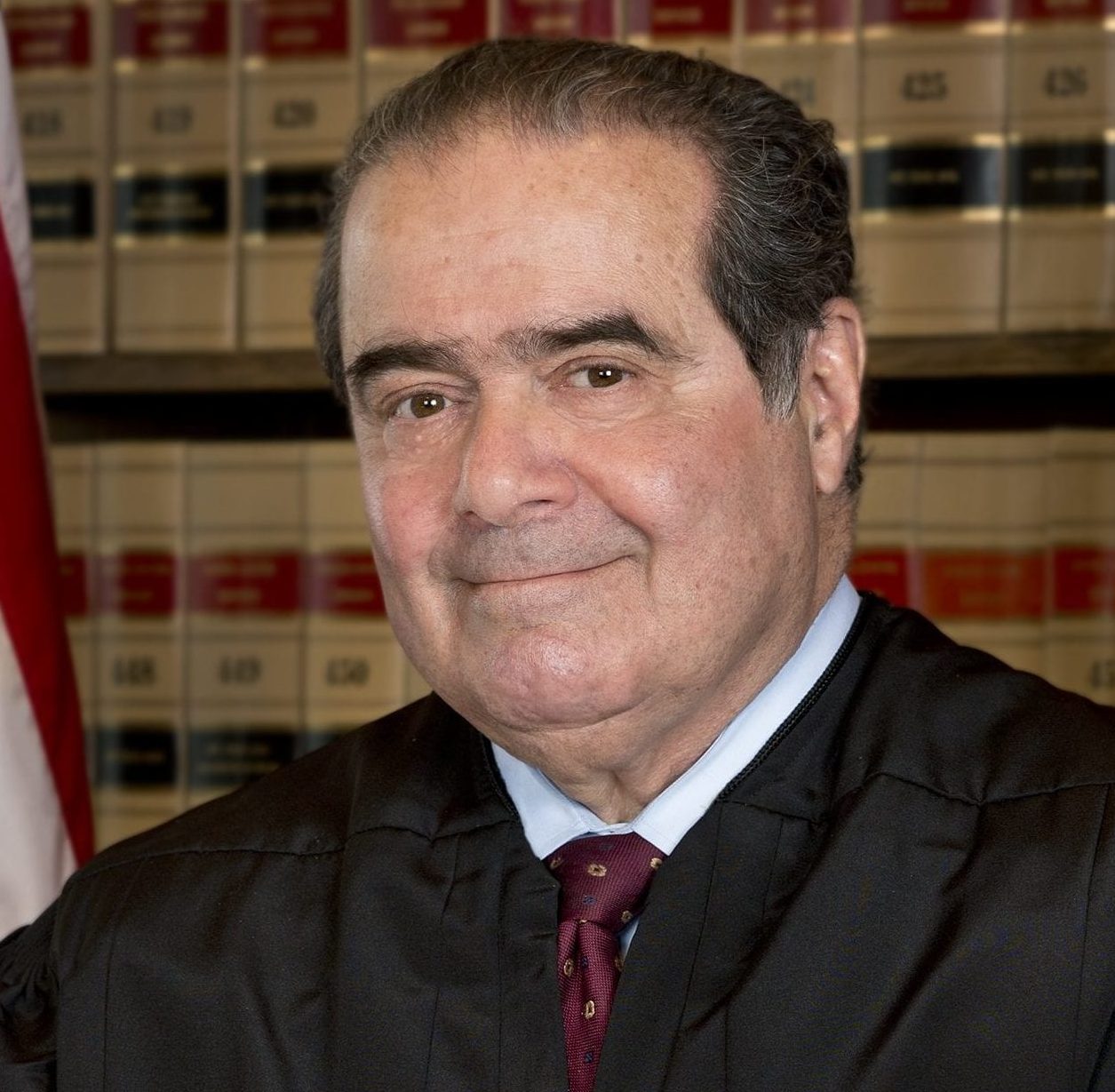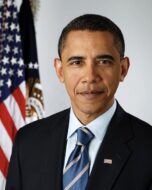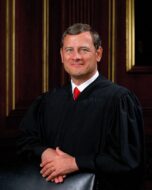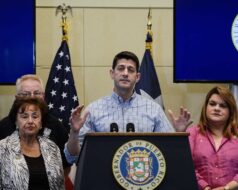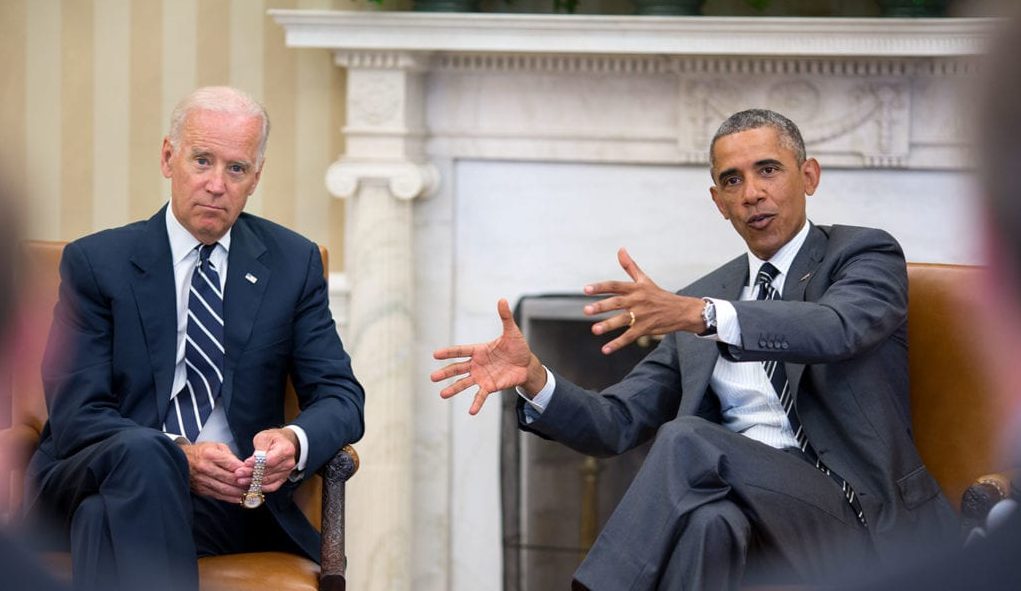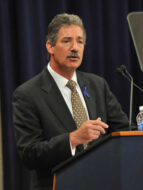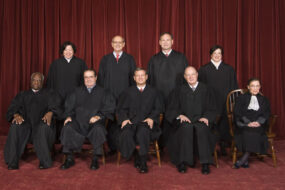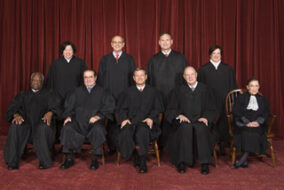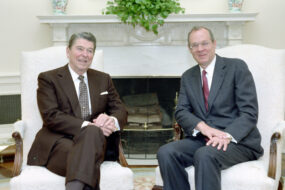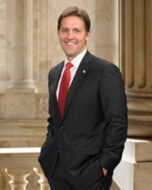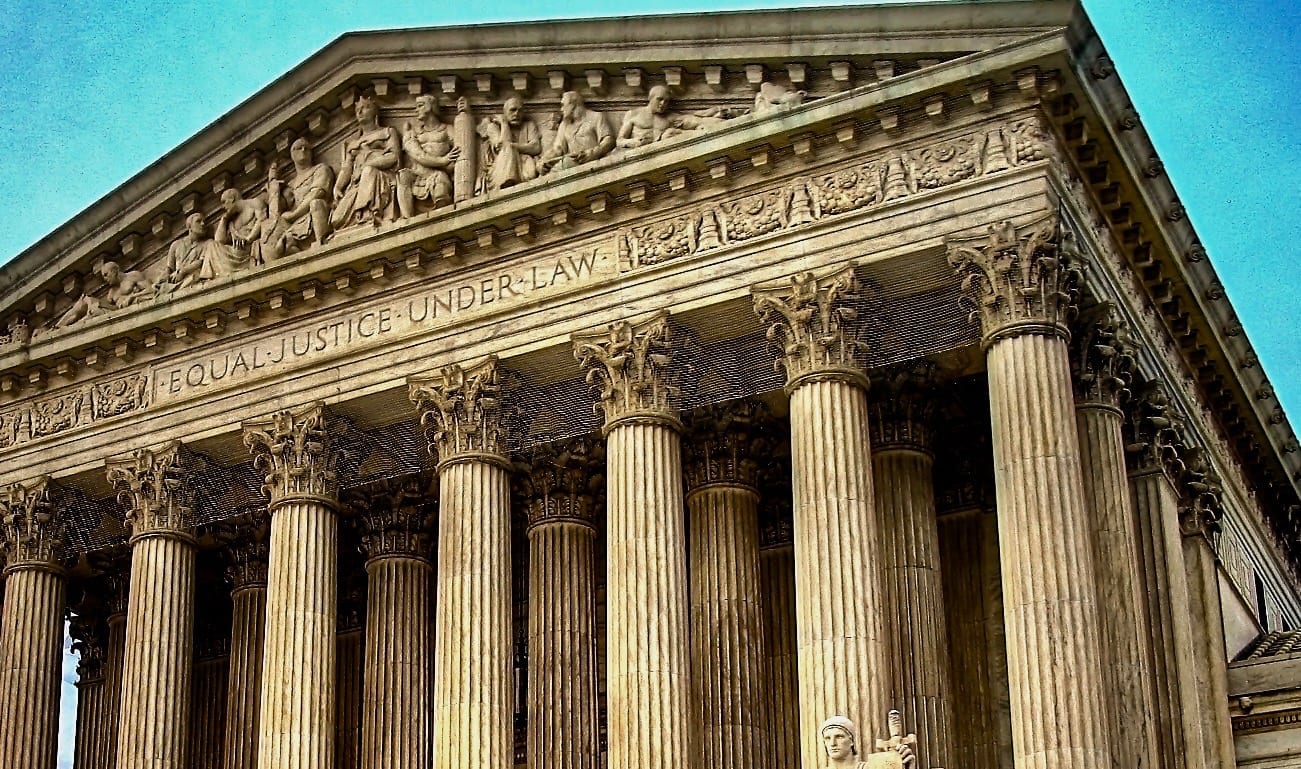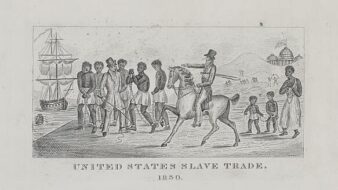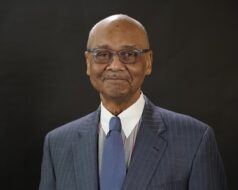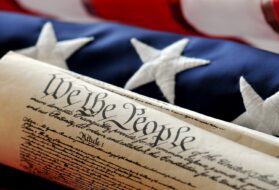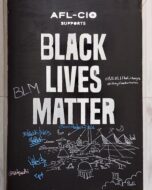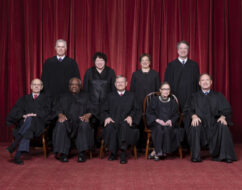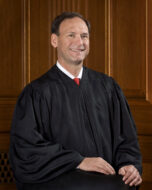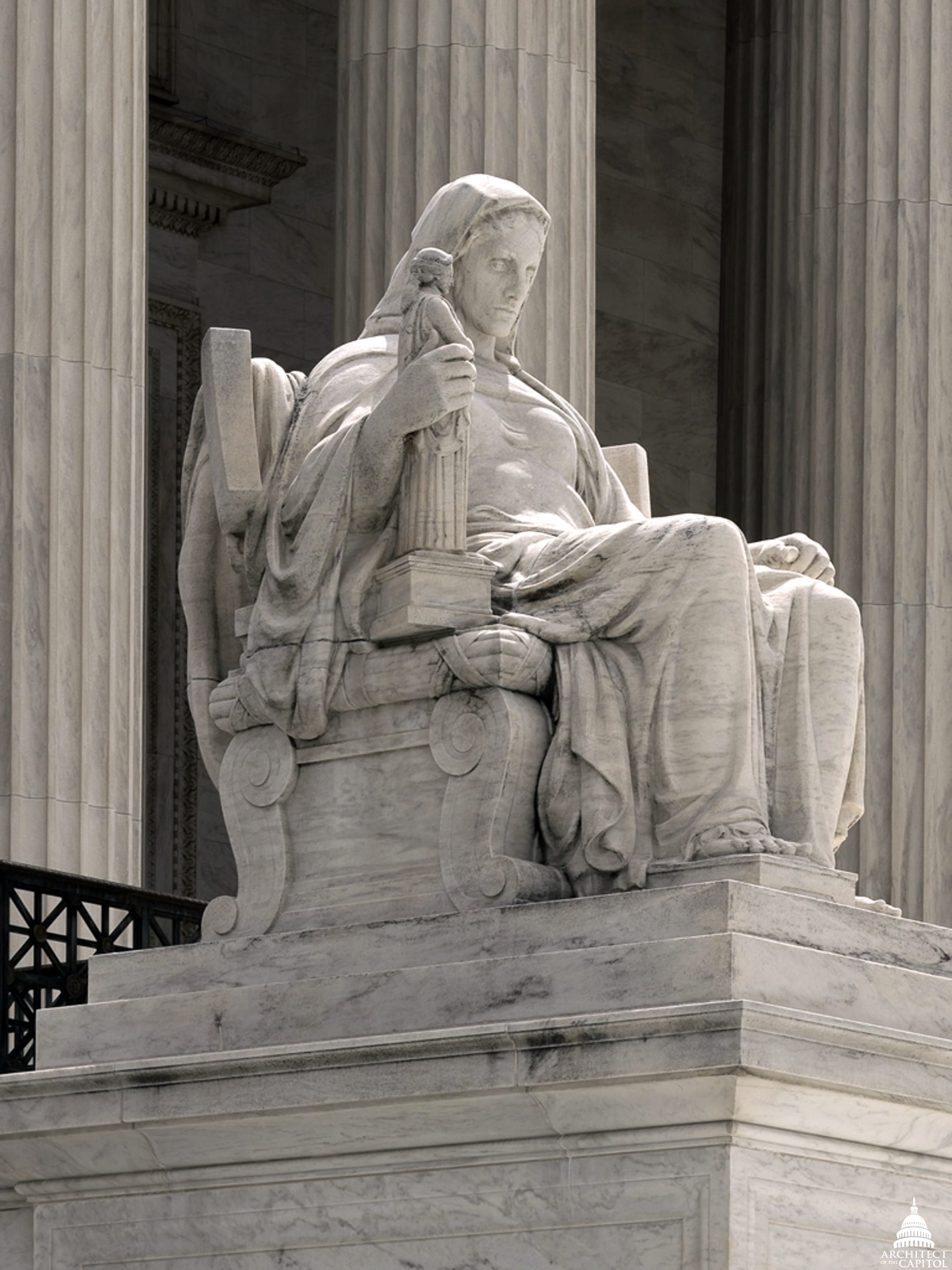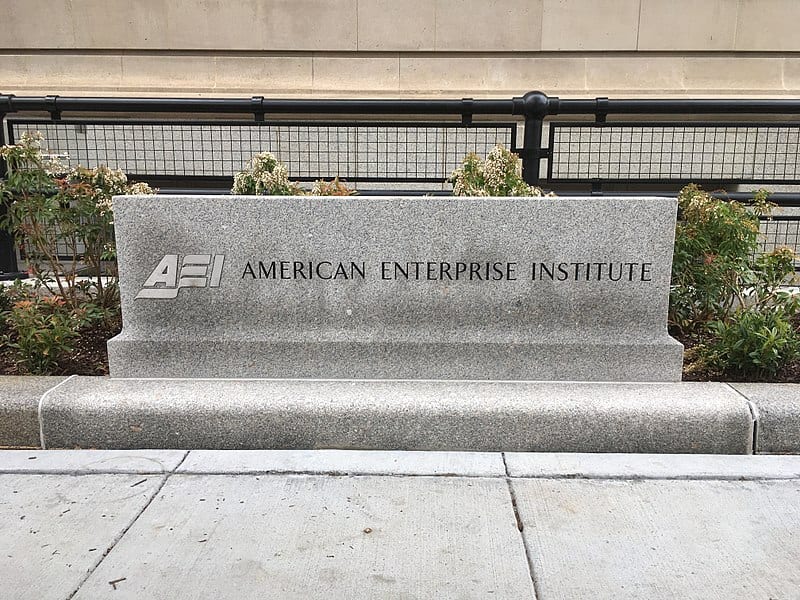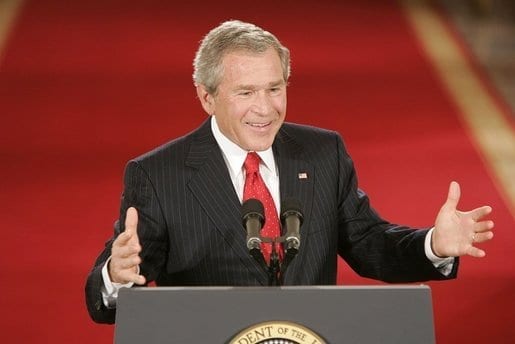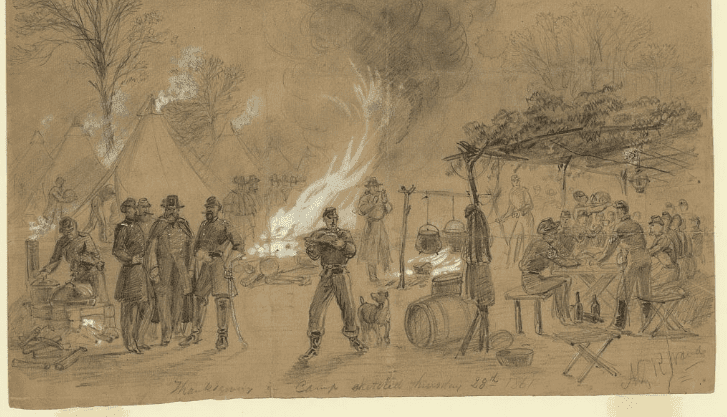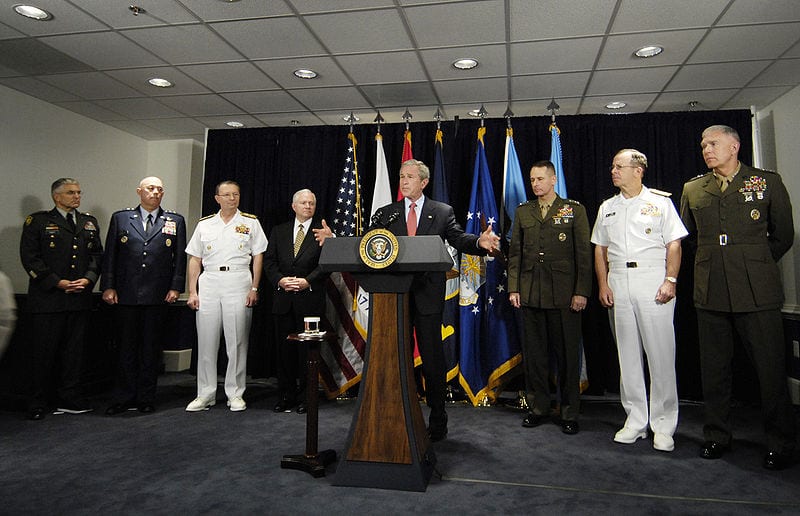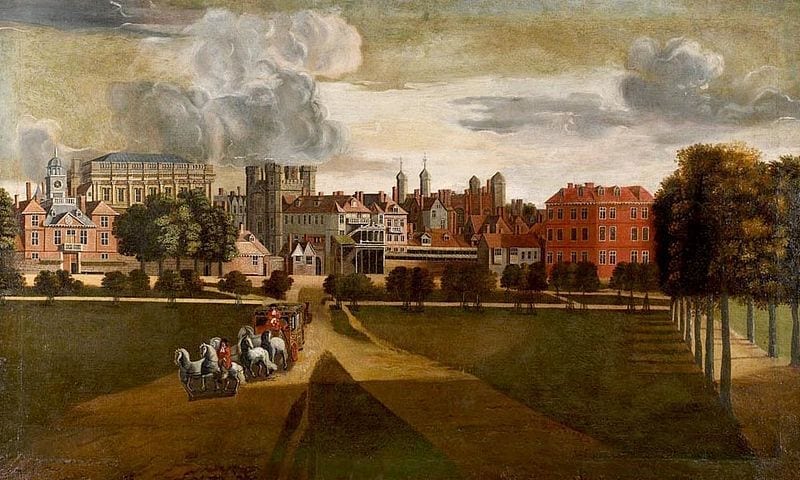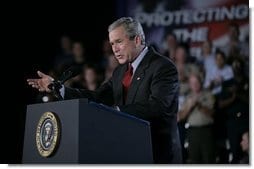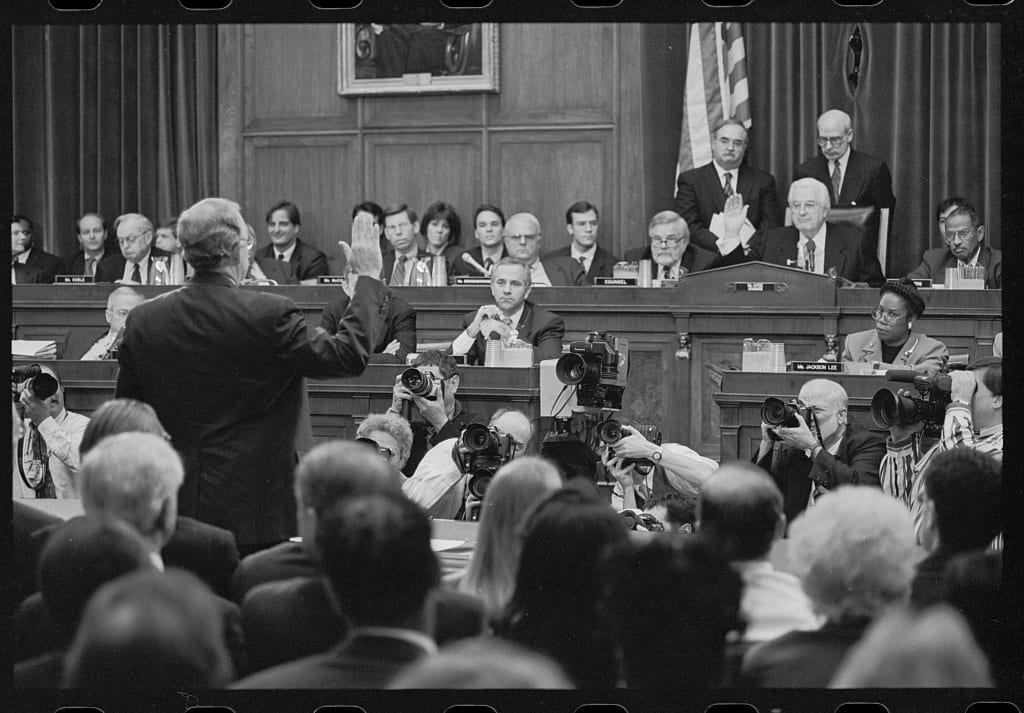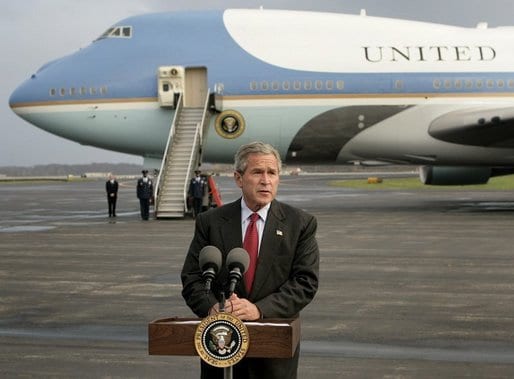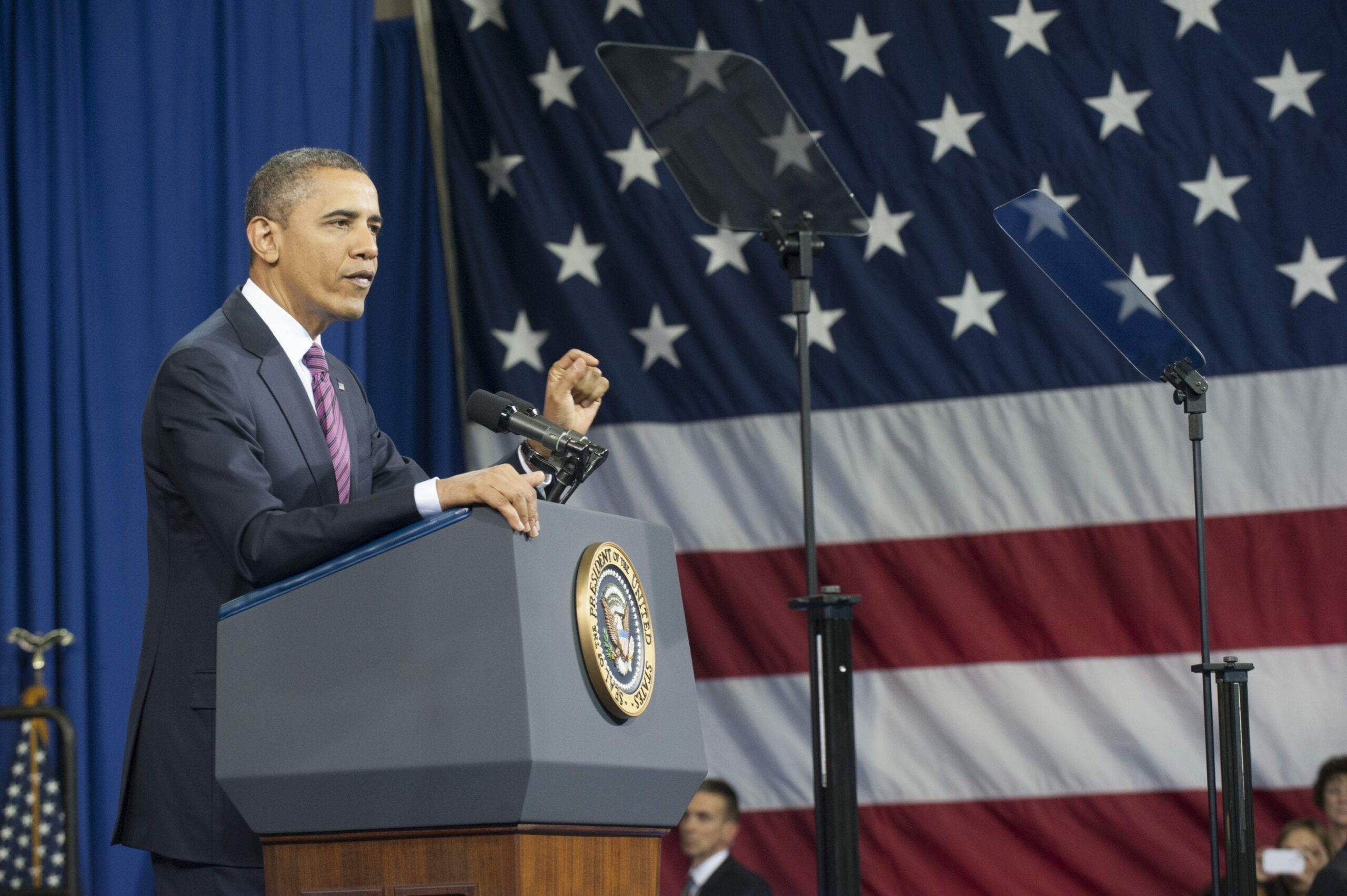

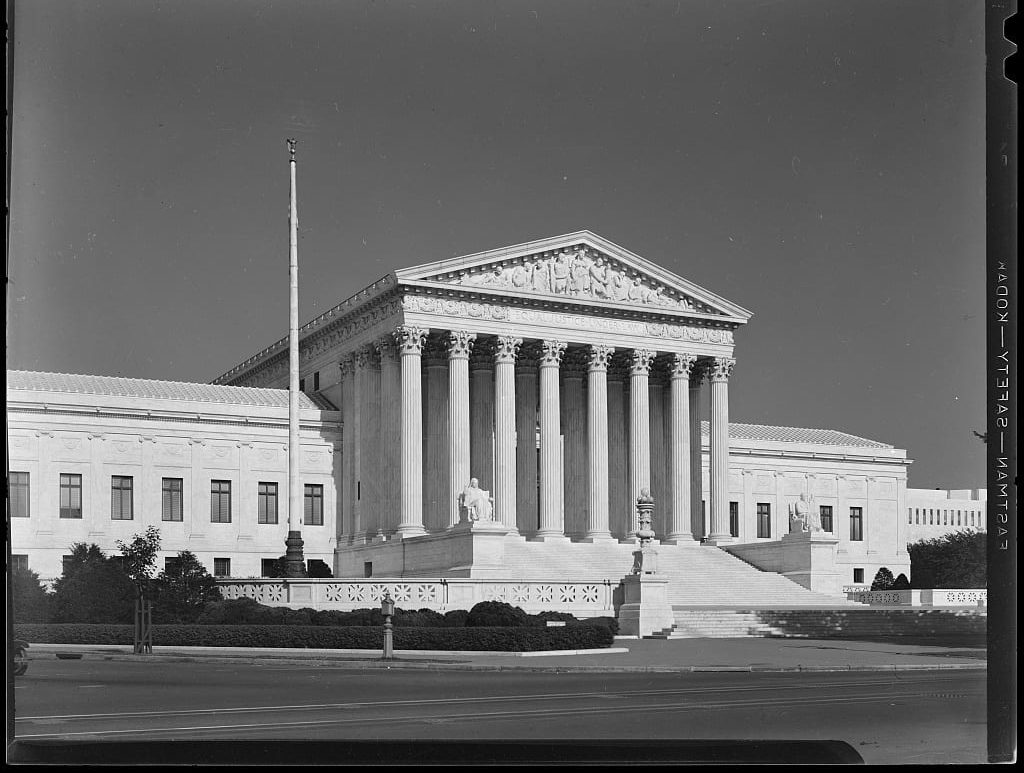
Introduction
Ishmael Jaffree, a resident of Mobile County, Alabama, asserted “that two of [his] children had been subjected to various acts of religious indoctrination” because of an Alabama law authorizing moments of silence in schools. For the Court, Justice John Paul Stevens declared the Alabama law a violation of the Establishment Clause of the First Amendment, applied to the states through the Fourteenth Amendment due process clause. Justice Stevens wrote that “[T]he First Amendment requires that a statute must be invalidated if it is entirely motivated by a purpose to advance religion.” He maintained that the law concealed its unconstitutional motive of promoting prayer. In his ruling, Justice Stevens relied on the precedents established by the opinions of Justice Hugo L. Black in previous Establishment Clause cases, (for example, see Everson v. Board of Education and McCollum v. Board of Education), expanding it in this case from prohibiting prayer in school to prohibiting moments of silence.
In his dissent, Justice William H. Rehnquist presented an alternate constitutional history to the one that Justice Black had relied on. He challenged the Court’s previous rulings that a wall of separation should exist between church and state, arguing instead that the Establishment Clause was meant originally to prohibit only a national Church or preferential treatment of one sect among others. He also argued that the Lemon test led to inconsistencies in determining what government practices constituted establishment of a religion. Justice David H. Souter’s dissent in Lee v. Weisman disputes both Rehnquist’s history and his original understanding approach. (See as well Justice Stevens’ dissent in Van Orden v. Perry). This dispute is at the heart of the approach known as “originalism.” Those who argue for a “living Constitution” might argue that as long as the spirit or intention of the document remains, past historical meaning is of secondary concern.
From the opinions in Wallace v. Jaffree, we include only Justice Rehnquist’s dissent. Concurring Justice Sandra Day O’Connor maintained that most moments of silence would remain protected.
Source: Wallace v. Jaffree, 472 U.S. 38, https://supreme.justia.com/cases/federal/us/472/38/. Footnotes added by the editors are preceded by “Ed. note.”
JUSTICE REHNQUIST, dissenting.
Thirty-eight years ago this Court, in Everson v. Board of Education,[1] summarized its exegesis of Establishment Clause doctrine thus: “In the words of Jefferson, the clause against establishment of religion by law was intended to erect ‘a wall of separation between church and state. Reynolds v. United States, 98 U.S. 145, 98 U. S. 164 (1879)].” This language from Reynolds, a case involving the Free Exercise Clause of the First Amendment, rather than the Establishment Clause, quoted from Thomas Jefferson’s letter to the Danbury Baptist Association the phrase “I contemplate with sovereign reverence that act of the whole American people which declared that their legislature should ‘make no law respecting an establishment of religion, or prohibiting the free exercise thereof,’ thus building a wall of separation between church and state.”
It is impossible to build sound constitutional doctrine upon a mistaken understanding of constitutional history, but unfortunately the Establishment Clause has been expressly freighted with Jefferson’s misleading metaphor for nearly 40 years. Thomas Jefferson was, of course, in France at the time the constitutional amendments known as the Bill of Rights were passed by Congress and ratified by the states. His letter to the Danbury Baptist Association was a short note of courtesy, written 14 years after the amendments were passed by Congress. He would seem to any detached observer as a less than ideal source of contemporary history as to the meaning of the Religion Clauses of the First Amendment.
Jefferson’s fellow Virginian, James Madison, with whom he was joined in the battle for the enactment of the Virginia Statute of Religious Liberty of 1786, did play as large a part as anyone in the drafting of the Bill of Rights. He had two advantages over Jefferson in this regard: he was present in the United States, and he was a leading member of the First Congress. But when we turn to the record of the proceedings in the First Congress leading up to the adoption of the Establishment Clause of the Constitution, including Madison’s significant contributions thereto, we see a far different picture of its purpose than the highly simplified “wall of separation between church and state.”
During the debates in the Thirteen Colonies over ratification of the Constitution, one of the arguments frequently used by opponents of ratification was that, without a Bill of Rights guaranteeing individual liberty, the new general government carried with it a potential for tyranny. The typical response to this argument on the part of those who favored ratification was that the general government established by the Constitution had only delegated powers, and that these delegated powers were so limited that the government would have no occasion to violate individual liberties. This response satisfied some, but not others, and of the 11 Colonies which ratified the Constitution by early 1789, 5 proposed one or another amendments guaranteeing individual liberty. Three—New Hampshire, New York, and Virginia—included in one form or another a declaration of religious freedom. Rhode Island and North Carolina flatly refused to ratify the Constitution in the absence of amendments in the nature of a Bill of Rights. Virginia and North Carolina proposed identical guarantees of religious freedom: “[A]ll men have an equal, natural and unalienable right to the free exercise of religion, according to the dictates of conscience, and . . . no particular religious sect or society ought to be favored or established, by law, in preference to others.”
On June 8, 1789, James Madison rose in the House of Representatives and “reminded the House that this was the day that he had heretofore named for bringing forward amendments to the Constitution.” Madison’s subsequent remarks in urging the House to adopt his drafts of the proposed Amendments were less those of a dedicated advocate of the wisdom of such measures than those of a prudent statesman seeking the enactment of measures sought by a number of his fellow citizens which could surely do no harm, and might do a great deal of good. . . .
The language Madison proposed for what ultimately became the Religion Clauses of the First Amendment was this: “The civil rights of none shall be abridged on account of religious belief or worship, nor shall any national religion be established, nor shall the full and equal rights of conscience be in any manner, or on any pretext, infringed.”
[Justice Rehnquist summarized the debate over Madison’s proposal in the House.] . . .
The following week, without any apparent debate, the House voted to alter the language of the Religion Clauses to read “Congress shall make no law establishing religion, or to prevent the free exercise thereof, or to infringe the rights of conscience.” The floor debates in the Senate were secret, and therefore not reported in the annals. The Senate, on September 3, 1789, considered several different forms of the Religion Amendment, and reported this language back to the House: “Congress shall make no law establishing articles of faith or a mode of worship, or prohibiting the free exercise of religion.”
The House refused to accept the Senate’s changes in the Bill of Rights, and asked for a conference; the version which emerged from the conference was that which ultimately found its way into the Constitution as a part of the First Amendment. “Congress shall make no law respecting an establishment of religion, or prohibiting the free exercise thereof.” The House and the Senate both accepted this language on successive days, and the amendment was proposed in this form.
On the basis of the record of these proceedings in the House of Representatives, James Madison was undoubtedly the most important architect among the members of the House of the amendments which became the Bill of Rights, but it was James Madison speaking as an advocate of sensible legislative compromise, not as an advocate of incorporating the Virginia Statute of Religious Liberty into the United States Constitution. During the ratification debate in the Virginia Convention, Madison had actually opposed the idea of any Bill of Rights. His sponsorship of the amendments in the House was obviously not that of a zealous believer in the necessity of the Religion Clauses, but of one who felt it might do some good, could do no harm, and would satisfy those who had ratified the Constitution on the condition that Congress propose a Bill of Rights. His original language “nor shall any national religion be established” obviously does not conform to the “wall of separation” between church and state idea which latter-day commentators have ascribed to him. His explanation on the floor of the meaning of his language—“that Congress should not establish a religion, and enforce the legal observation of it by law”—is of the same ilk. When he replied to Huntington in the debate over the proposal which came from the Select Committee of the House, he urged that the language “no religion shall be established by law” should be amended by inserting the word “national” in front of the word “religion.”
It seems indisputable from these glimpses of Madison’s thinking, as reflected by actions on the floor of the House in 1789, that he saw the amendment as designed to prohibit the establishment of a national religion, and perhaps to prevent discrimination among sects. He did not see it as requiring neutrality on the part of government between religion and irreligion. Thus the Court’s opinion in Everson—while correct in bracketing Madison and Jefferson together in their exertions in their home state leading to the enactment of the Virginia Statute of Religious Liberty—is totally incorrect in suggesting that Madison carried these views onto the floor of the United States House of Representatives when he proposed the language which would ultimately become the Bill of Rights.
The repetition of this error in the Court’s opinion in Illinois ex rel. McCollum v. Board of Education,[2] and Engel v. Vitale[3] does not make it any sounder historically. Finally, in Abington School District v. Schempp, 374 U. S. 203, 374 U. S. 214 (1963), the Court made the truly remarkable statement that “the views of Madison and Jefferson, preceded by Roger Williams, came to be incorporated not only in the federal Constitution but likewise in those of most of our states.” On the basis of what evidence we have, this statement is demonstrably incorrect as a matter of history. And its repetition in varying forms in succeeding opinions of the Court can give it no more authority than it possesses as a matter of fact; stare decisis[4] may bind courts as to matters of law, but it cannot bind them as to matters of history.
None of the other members of Congress who spoke during the August 15 debate expressed the slightest indication that they thought the language before them from the Select Committee, or the evil to be aimed at, would require that the government be absolutely neutral as between religion and irreligion. The evil to be aimed at, so far as those who spoke were concerned, appears to have been the establishment of a national church, and perhaps the preference of one religious sect over another; but it was definitely not concerned about whether the government might aid all religions evenhandedly. If one were to follow the advice of Justice Brennan . . . and construe the amendment in the light of what particular “practices . . . challenged threaten those consequences which the Framers deeply feared; whether, in short, they tend to promote that type of interdependence between religion and state which the First Amendment was designed to prevent,”[5] one would have to say that the First Amendment Establishment Clause should be read no more broadly than to prevent the establishment of a national religion or the governmental preference of one religious sect over another.
The actions of the First Congress, which reenacted the Northwest Ordinance for the governance of the Northwest Territory in 1789, confirm the view that Congress did not mean that the government should be neutral between religion and irreligion. The House of Representatives took up the Northwest Ordinance on the same day as Madison introduced his proposed amendments which became the Bill of Rights; while at that time the federal government was, of course, not bound by draft amendments to the Constitution which had not yet been proposed by Congress, say nothing of ratified by the states, it seems highly unlikely that the House of Representatives would simultaneously consider proposed amendments to the Constitution and enact an important piece of territorial legislation which conflicted with the intent of those proposals. The Northwest Ordinance, 1 Stat. 50, reenacted the Northwest Ordinance of 1787 and provided that “[r]eligion, morality, and knowledge, being necessary to good government and the happiness of mankind, schools and the means of education shall forever be encouraged.” Land grants for schools in the Northwest Territory were not limited to public schools. It was not until 1845 that Congress limited land grants in the new states and territories to nonsectarian schools.
On the day after the House of Representatives voted to adopt the form of the First Amendment Religion Clauses which was ultimately proposed and ratified, Representative Elias Boudinot proposed a resolution asking President George Washington to issue a Thanksgiving Day Proclamation. Boudinot said he “could not think of letting the session pass over without offering an opportunity to all the citizens of the United States of joining with one voice, in returning to Almighty God their sincere thanks for the many blessings he had poured down upon them.” Representative Aedanas Burke objected to the resolution because he did not like “this mimicking of European customs”; Representative Thomas Tucker objected that whether or not the people had reason to be satisfied with the Constitution was something that the States knew better than the Congress, and, in any event, “it is a religious matter, and, as such, is proscribed to us.” Representative Sherman supported the resolution “not only as a laudable one in itself, but as warranted by a number of precedents in Holy Writ: for instance, the solemn thanksgivings and rejoicings which took place in the time of Solomon, after the building of the temple, was a case in point. This example, he thought, worthy of Christian imitation on the present occasion. . . .”
Boudinot’s resolution was carried in the affirmative on September 25, 1789. Boudinot and Sherman, who favored the Thanksgiving Proclamation, voted in favor of the adoption of the proposed amendments to the Constitution, including the Religion Clauses; Tucker, who opposed the Thanksgiving Proclamation, voted against the adoption of the amendments which became the Bill of Rights.
Within two weeks of this action by the House, George Washington responded to the Joint Resolution which by now had been changed to include the language that the President “recommend to the people of the United States a day of public thanksgiving and prayer, to be observed by acknowledging with grateful hearts the many and signal favors of Almighty God, especially by affording them an opportunity peaceably to establish a form of government for their safety and happiness.”[6]. . . .
George Washington, John Adams, and James Madison all issued Thanksgiving Proclamations; Thomas Jefferson did not. . . .
As the United States moved from the 18th into the 19th century, Congress appropriated time and again public moneys in support of sectarian Indian education carried on by religious organizations. Typical of these was Jefferson’s treaty with the Kaskaskia Indians, which provided annual cash support for the tribe’s Roman Catholic priest and church. It was not until 1897, when aid to sectarian education for Indians had reached $500,000 annually, that Congress decided thereafter to cease appropriating money for education in sectarian schools. This history shows the fallacy of the notion found in Everson that “no tax in any amount” may be levied for religious activities in any form.
Joseph Story, a member of this Court from 1811 to 1845, and during much of that time a professor at the Harvard Law School, published by far the most comprehensive treatise on the United States Constitution that had then appeared. Volume 2 of Story’s “Commentaries on the Constitution of the United States” discussed the meaning of the Establishment Clause of the First Amendment this way:
Probably at the time of the adoption of the Constitution, and of the amendment to it now under consideration [First Amendment], the general if not the universal sentiment in America was that Christianity ought to receive encouragement from the state so far as was not incompatible with the private rights of conscience and the freedom of religious worship. An attempt to level all religions, and to make it a matter of state policy to hold all in utter indifference, would have created universal disapprobation, if not universal indignation.
The real object of the [First] [A]mendment was not to countenance, much less to advance, Mahometanism, or Judaism, or infidelity, by prostrating Christianity, but to exclude all rivalry among Christian sects, and to prevent any national ecclesiastical establishment which should give to a hierarchy the exclusive patronage of the national government. It thus cut off the means of religious persecution (the vice and pest of former ages), and of the subversion of the rights of conscience in matters of religion, which had been trampled upon almost from the days of the Apostles to the present age. . . .
It would seem from this evidence that the Establishment Clause of the First Amendment had acquired a well-accepted meaning: it forbade establishment of a national religion, and forbade preference among religious sects or denominations. Indeed, the first American dictionary defined the word “establishment” as “the act of establishing, founding, ratifying or ordaining,” such as in “[t]he episcopal form of religion, so called, in England.” The Establishment Clause did not require government neutrality between religion and irreligion, nor did it prohibit the federal government from providing nondiscriminatory aid to religion. There is simply no historical foundation for the proposition that the Framers intended to build the “wall of separation” that was constitutionalized in Everson.
Notwithstanding the absence of a historical basis for this theory of rigid separation, the wall idea might well have served as a useful, albeit misguided, analytical concept, had it led this Court to unified and principled results in Establishment Clause cases. The opposite, unfortunately, has been true; in the 38 years since Everson, our Establishment Clause cases have been neither principled nor unified. Our recent opinions, many of them hopelessly divided pluralities, have with embarrassing candor conceded that the “wall of separation” is merely a “blurred, indistinct, and variable barrier,” which “is not wholly accurate” and can only be “dimly perceived.”
Whether due to its lack of historical support or its practical unworkability, the Everson “wall” has proved all but useless as a guide to sound constitutional adjudication. It illustrates only too well the wisdom of Benjamin Cardozo’s observation that “[m]etaphors in law are to be narrowly watched, for starting as devices to liberate thought, they end often by enslaving it.”[7]
But the greatest injury of the “wall” notion is its mischievous diversion of judges from the actual intentions of the drafters of the Bill of Rights. The “crucible of litigation”[8] is well adapted to adjudicating factual disputes on the basis of testimony presented in court, but no amount of repetition of historical errors in judicial opinions can make the errors true. The “wall of separation between church and state” is a metaphor based on bad history, a metaphor which has proved useless as a guide to judging. It should be frankly and explicitly abandoned.
The Court has more recently attempted to add some mortar to Everson‘s wall through the three-part test of Lemon v. Kurtzman[9] which served at first to offer a more useful test for purposes of the Establishment Clause than did the “wall” metaphor. Generally stated, the Lemon test proscribes state action that has a sectarian purpose or effect, or causes an impermissible governmental entanglement with religion.
Lemon cited Board of Education v. Allen[10] as the source of the “purpose” and “effect” prongs of the three-part test. The Allen opinion explains, however, how it inherited the purpose and effect elements from Schempp and Everson, both of which contain the historical errors described above. Thus the purpose and effect prongs have the same historical deficiencies as the wall concept itself: they are in no way based on either the language or intent of the drafters.
The secular purpose prong has proved mercurial in application because it has never been fully defined, and we have never fully stated how the test is to operate. If the purpose prong is intended to void those aids to sectarian institutions accompanied by a stated legislative purpose to aid religion, the prong will condemn nothing so long as the legislature utters a secular purpose and says nothing about aiding religion. Thus, the constitutionality of a statute may depend upon what the legislators put into the legislative history and, more importantly, what they leave out. The purpose prong means little if it only requires the legislature to express any secular purpose and omit all sectarian references, because legislators might do just that. Faced with a valid legislative secular purpose, we could not properly ignore that purpose without a factual basis for doing so.
However, if the purpose prong is aimed to void all statutes enacted with the intent to aid sectarian institutions, whether stated or not, then most statutes providing any aid, such as textbooks or bus rides for sectarian school children, will fail because one of the purposes behind every statute, whether stated or not, is to aid the target of its largesse. In other words, if the purpose prong requires an absence of any intent to aid sectarian institutions, whether or not expressed, few state laws in this area could pass the test, and we would be required to void some state aids to religion which we have already upheld. . . .
These difficulties arise because the Lemon test has no more grounding in the history of the First Amendment than does the wall theory upon which it rests. The three-part test represents a determined effort to craft a workable rule from a historically faulty doctrine; but the rule can only be as sound as the doctrine it attempts to service. The three-part test has simply not provided adequate standards for deciding Establishment Clause cases, as this Court has slowly come to realize. Even worse, the Lemon test has caused this Court to fracture into unworkable plurality opinions, depending upon how each of the three factors applies to a certain state action. The results from our school services cases show the difficulty we have encountered in making the Lemon test yield principled results.[11]
For example, a state may lend to parochial school children geography textbooks that contain maps of the United States, but the state may not lend maps of the United States for use in geography class. A state may lend textbooks on American colonial history, but it may not lend a film on George Washington, or a film projector to show it in history class. A state may lend classroom workbooks, but may not lend workbooks in which the parochial school children write, thus rendering them nonreusable. A state may pay for bus transportation to religious schools, but may not pay for bus transportation from the parochial school to the public zoo or natural history museum for a field trip. A state may pay for diagnostic services conducted in the parochial school, but therapeutic services must be given in a different building; speech and hearing “services” conducted by the state inside the sectarian school are forbidden, but the state may conduct speech and hearing diagnostic testing inside the sectarian school. Exceptional parochial school students may receive counseling, but it must take place outside of the parochial school, such as in a trailer parked down the street. A state may give cash to a parochial school to pay for the administration of state-written tests and state-ordered reporting services, but it may not provide funds for teacher-prepared tests on secular subjects. Religious instruction may not be given in public school, but the public school may release students during the day for religion classes elsewhere, and may enforce attendance at those classes with its truancy laws.
These results violate the historically sound principle “that the Establishment Clause does not forbid governments . . . to [provide] general welfare under which benefits are distributed to private individuals, even though many of those individuals may elect to use those benefits in ways that ‘aid’ religious instruction or worship.” It is not surprising in the light of this record that our most recent opinions have expressed doubt on the usefulness of the Lemon test.
Although the test initially provided helpful assistance, we soon began describing the test as only a “guideline,” and lately we have described it as “no more than [a] useful signpos[t].”[12] We have noted that the Lemon test is “not easily applied,” and as Justice White noted in Committee for Public Education & Religious Liberty v. Regan under the Lemon test we have “sacrifice[d] clarity and predictability for flexibility.” [13] In Lynch,[14] we reiterated that the Lemon test has never been binding on the Court, and we cited two cases where we had declined to apply it.
If a constitutional theory has no basis in the history of the amendment it seeks to interpret, is difficult to apply, and yields unprincipled results, I see little use in it. The “crucible of litigation” has produced only consistent unpredictability, and today’s effort is just a continuation of “the sisyphean task of trying to patch together the blurred, indistinct and variable barrier’ described in Lemon v. Kurtzman.”[15] We have done much straining since 1947, but still we admit that we can only “dimly perceive” the Everson wall. Our perception has been clouded not by the Constitution, but by the mists of an unnecessary metaphor.
The true meaning of the Establishment Clause can only be seen in its history. As drafters of our Bill of Rights, the Framers inscribed the principles that control today. Any deviation from their intentions frustrates the permanence of that charter and will only lead to the type of unprincipled decision-making that has plagued our Establishment Clause cases since Everson.
The Framers intended the Establishment Clause to prohibit the designation of any church as a “national” one. The clause was also designed to stop the federal government from asserting a preference for one religious denomination or sect over others. Given the “incorporation” of the Establishment Clause as against the states via the Fourteenth Amendment in Everson, states are prohibited as well from establishing a religion or discriminating between sects. As its history abundantly shows, however, nothing in the Establishment Clause requires government to be strictly neutral between religion and irreligion, nor does that clause prohibit Congress or the states from pursuing legitimate secular ends through nondiscriminatory sectarian means.
The Court strikes down the Alabama statute because the state wished to “characterize prayer as a favored practice.” It would come as much of a shock to those who drafted the Bill of Rights as it will to a large number of thoughtful Americans today to learn that the Constitution, as construed by the majority, prohibits the Alabama Legislature from “endorsing” prayer. George Washington himself, at the request of the very Congress which passed the Bill of Rights, proclaimed a day of “public thanksgiving and prayer, to be observed by acknowledging with grateful hearts the many and signal favors of Almighty God.” History must judge whether it was the Father of his Country in 1789, or a majority of the Court today, which has strayed from the meaning of the Establishment Clause.
The state surely has a secular interest in regulating the manner in which public schools are conducted. Nothing in the Establishment Clause of the First Amendment, properly understood, prohibits any such generalized “endorsement” of prayer. I would therefore reverse the judgment of the Court of Appeals.
- 1. Ed. note: Everson v. Board of Education of the Township of Ewing
- 2. Ed. note: Illinois ex rel. McCollum v. Board of Education of School District
- 3. Ed. note: Engel v. Vitale
- 4. Ed. note: the legal principle that courts should follow precedent
- 5. Abington School District v. Schempp, supra, at 374 U. S. 236,
- 6. Ed. note: Justice Rehnquist quotes Washington’s Thanksgiving Proclamation, October 3, 1789, https://teachingamericanhistory.org/library/document/thanksgiving-proclamation/?_sf_s=Washington+Thanksgiving.
- 7. Ed. note: Legal scholar and Associate Justice, U.S. Supreme Court (1932-1938)
- 8. Ed. note: Justice Rehnquist quotes from the Court’s opinion.
- 9. Ed. note: Widmar v. Vincent
- 10. Ed. note: Board of Education v. Allen (1968), 392 U.S. 236, https://www.law.cornell.edu/supremecourt/text/392/236
- 11. Ed. note: For an example, see Zelman v. Simmons-Harris.
- 12. Committee for Public Education & Religious Liberty v. Nyquist, 413 U.S. 756 (1973); Mueller v. Allen, 463 U. S. 388, 463 U. S. 394 (1983)
- 13. 444 US 646 (1980).
- 14. Ed. note: Lynch v. Donnelly
- 15. Regan, 444 US 646 (1980).

Conversation-based seminars for collegial PD, one-day and multi-day seminars, graduate credit seminars (MA degree), online and in-person.
